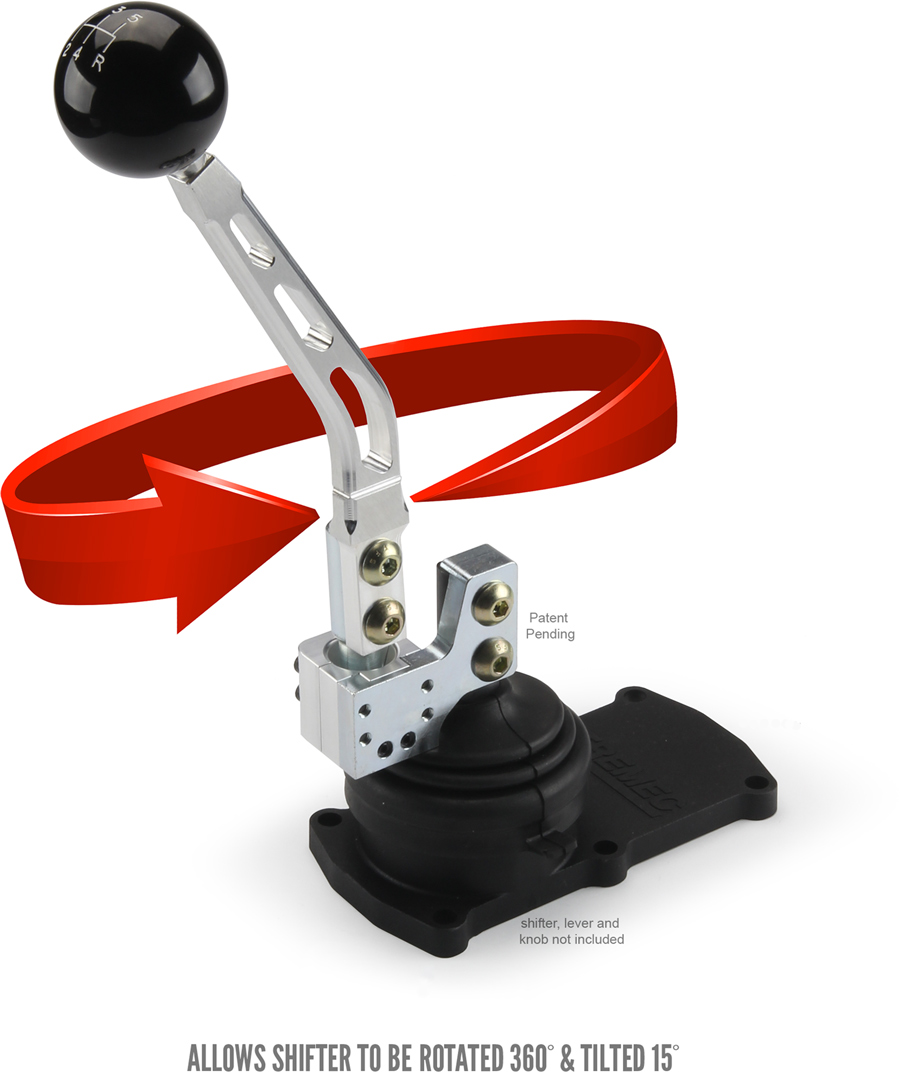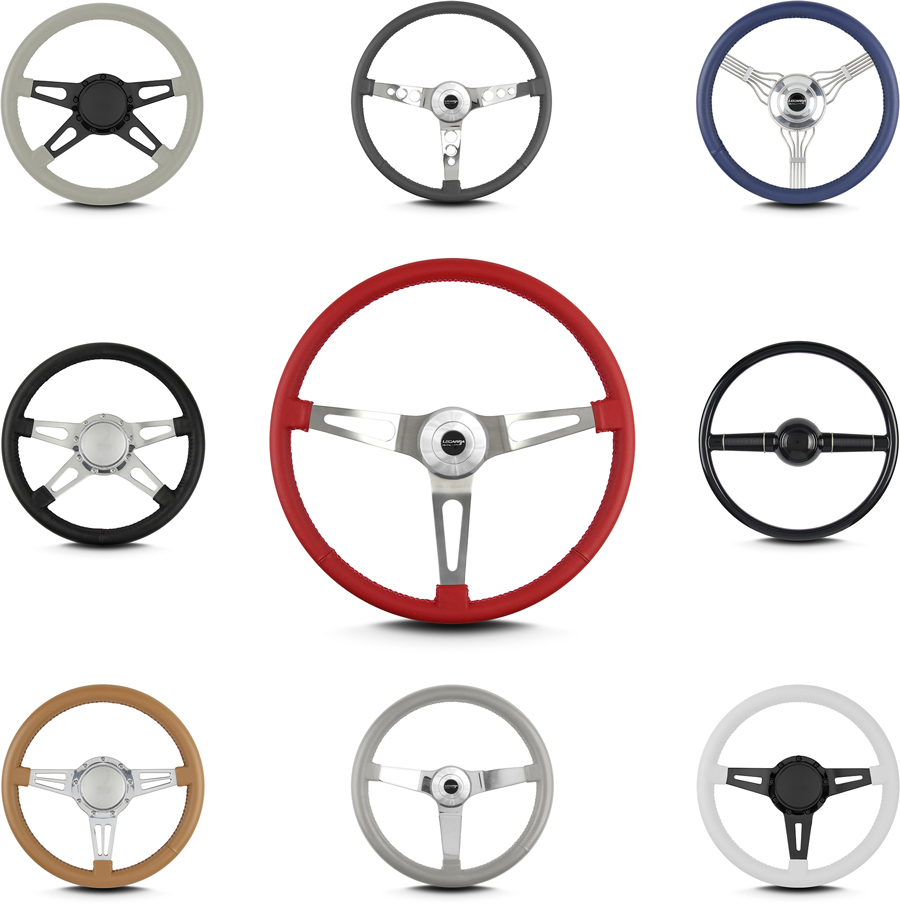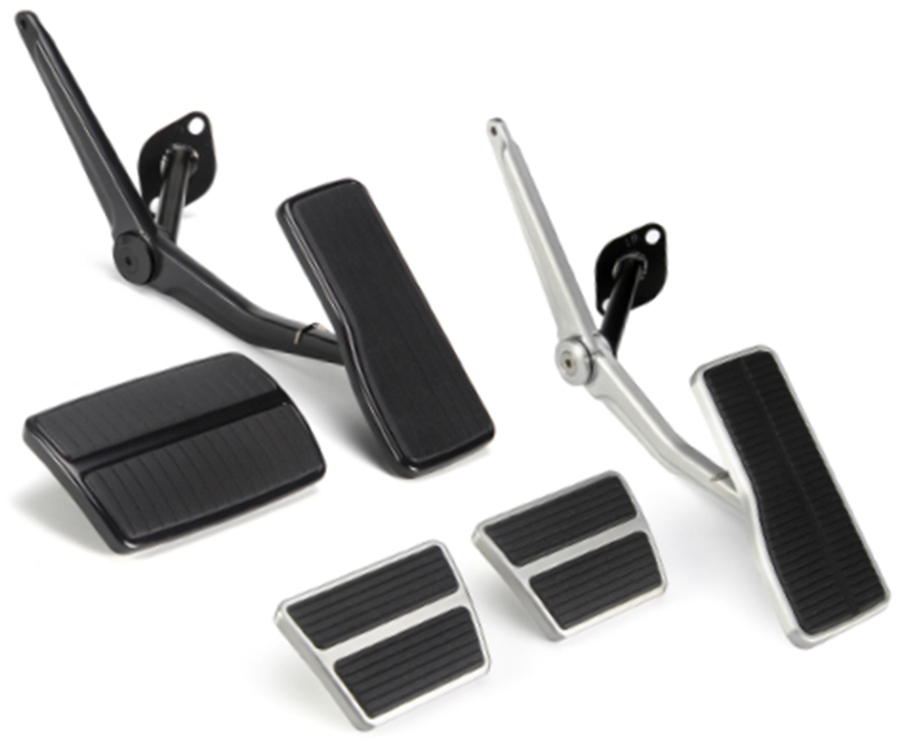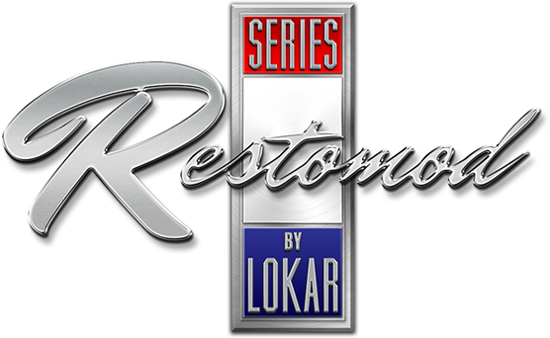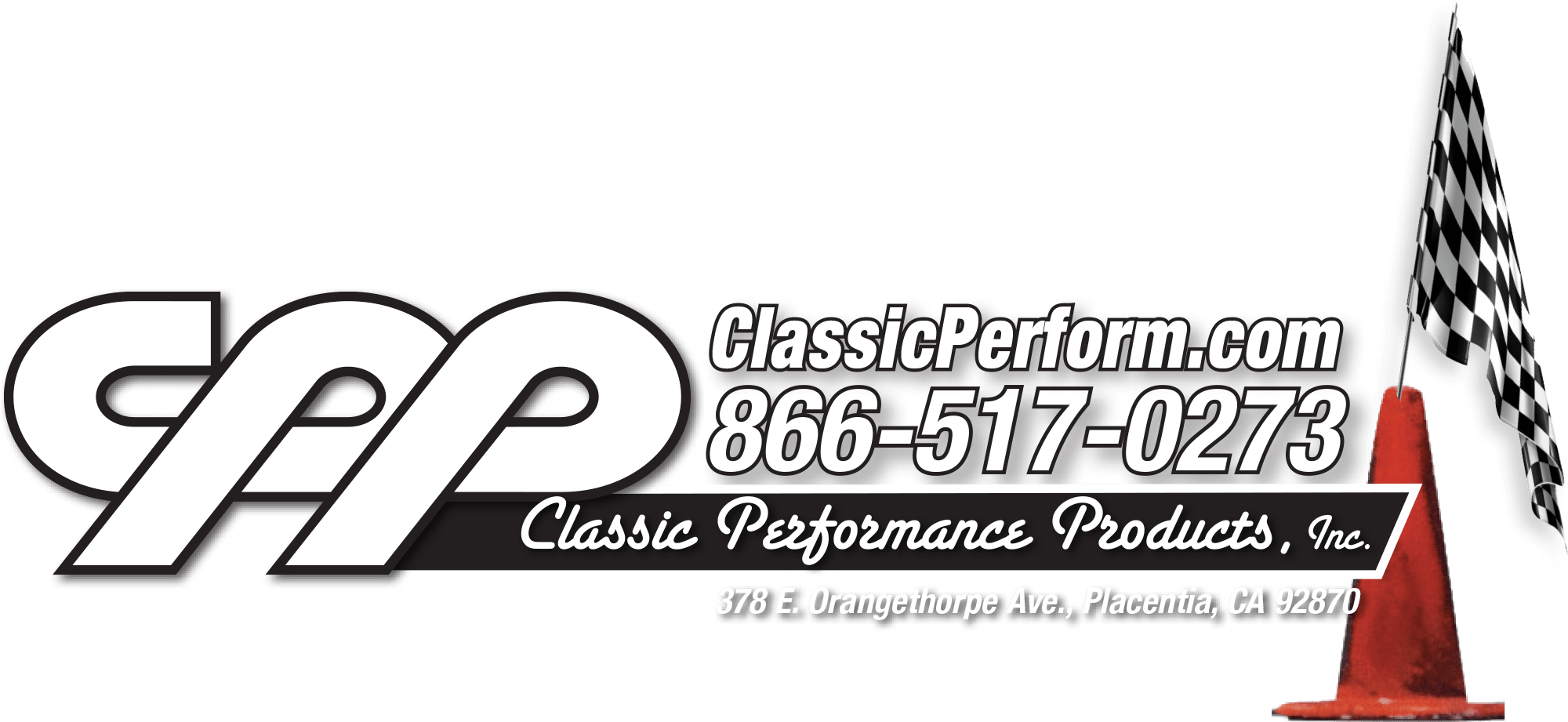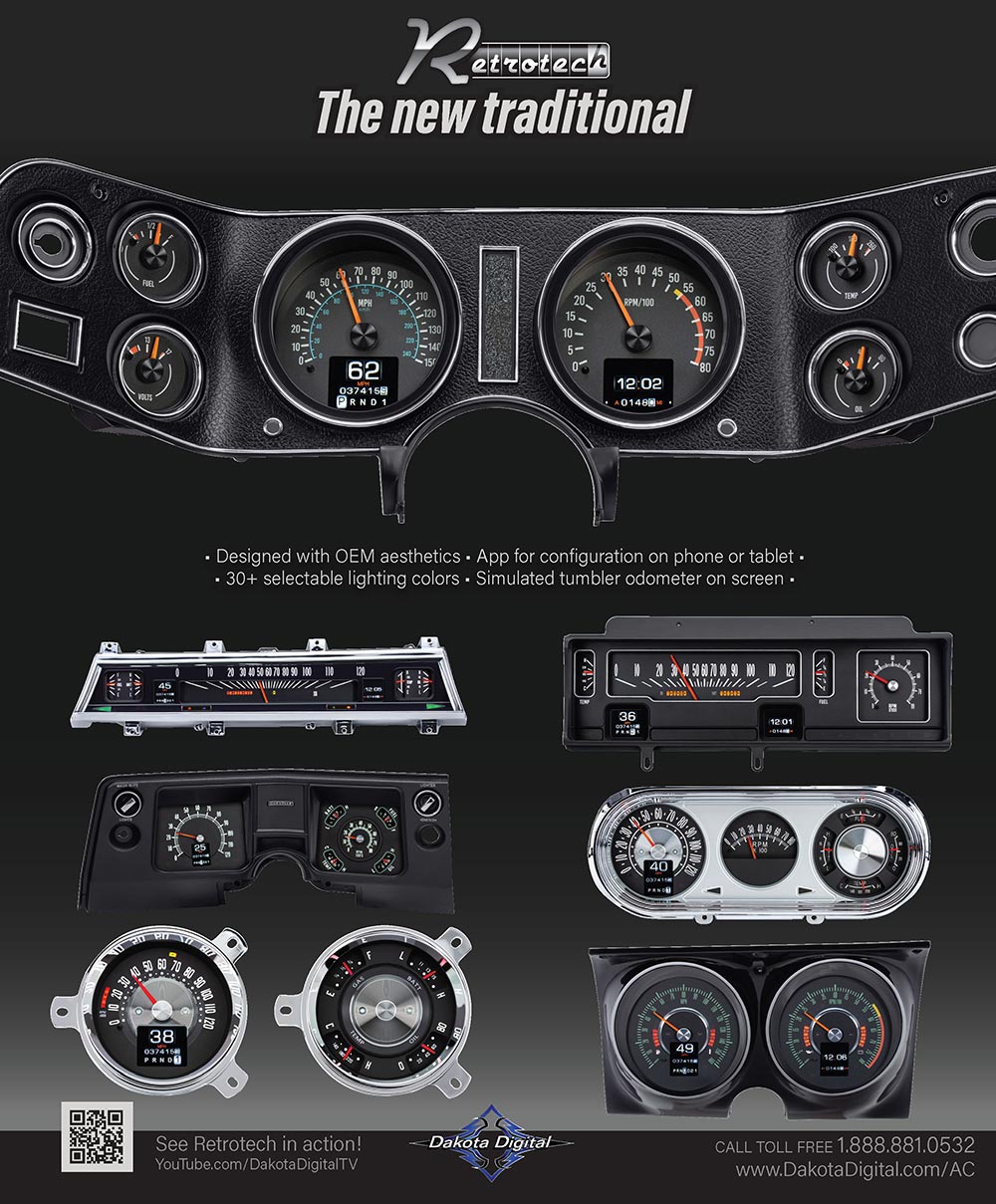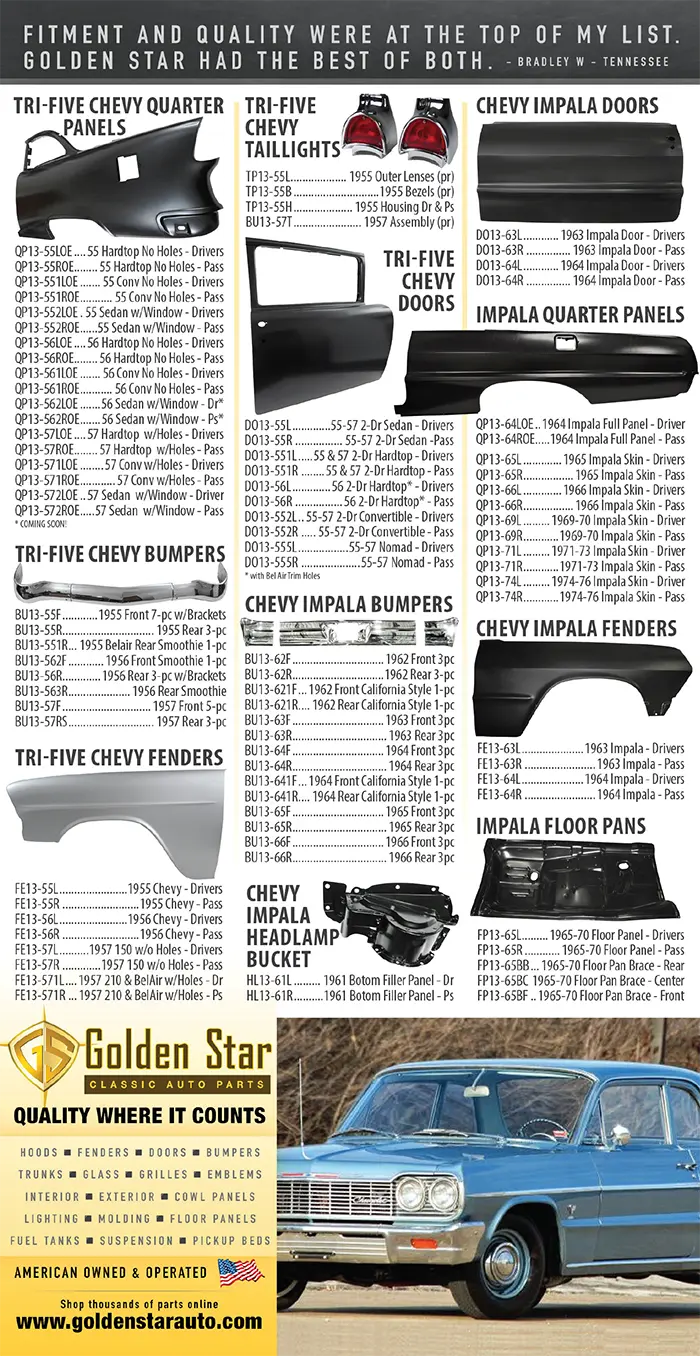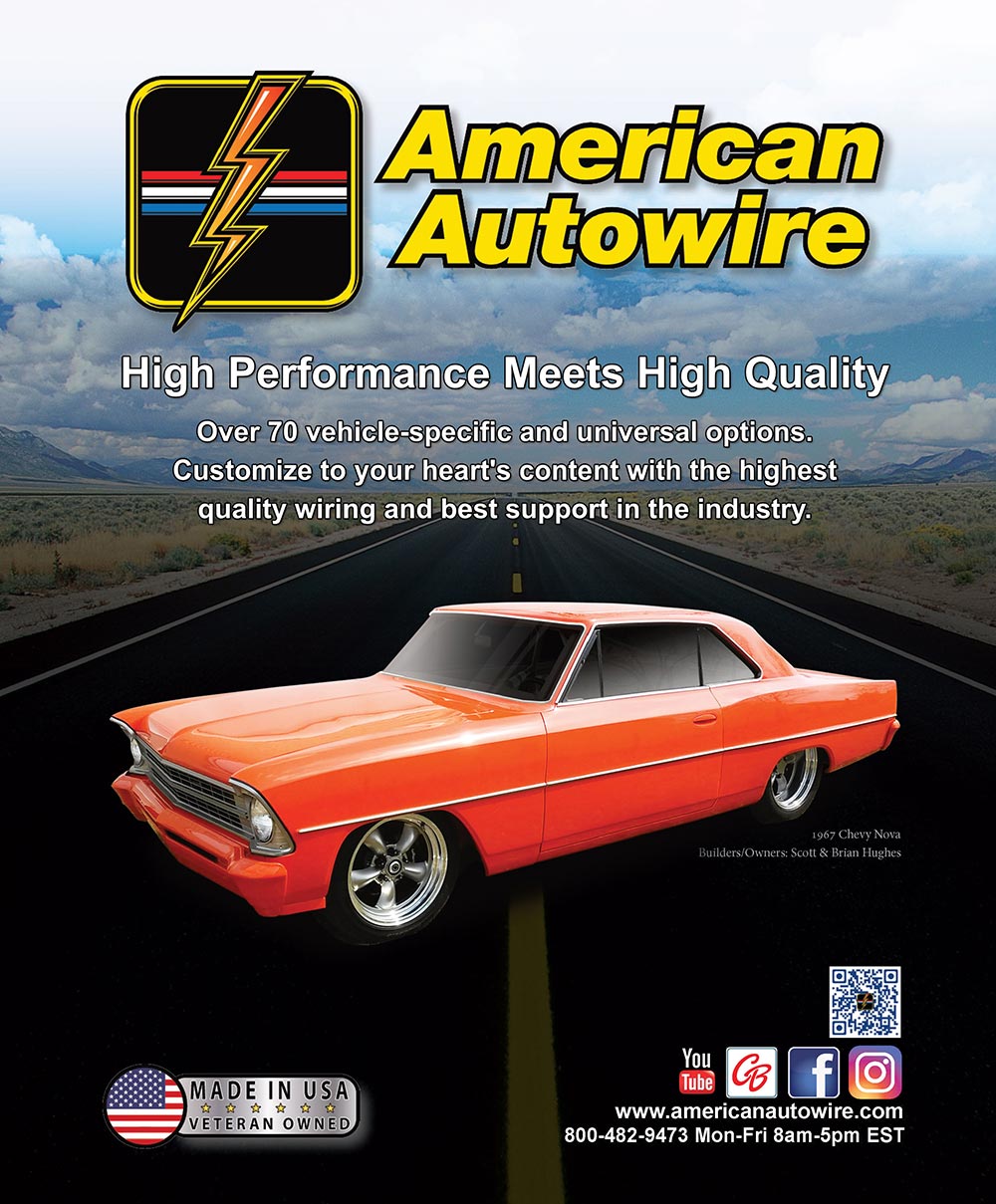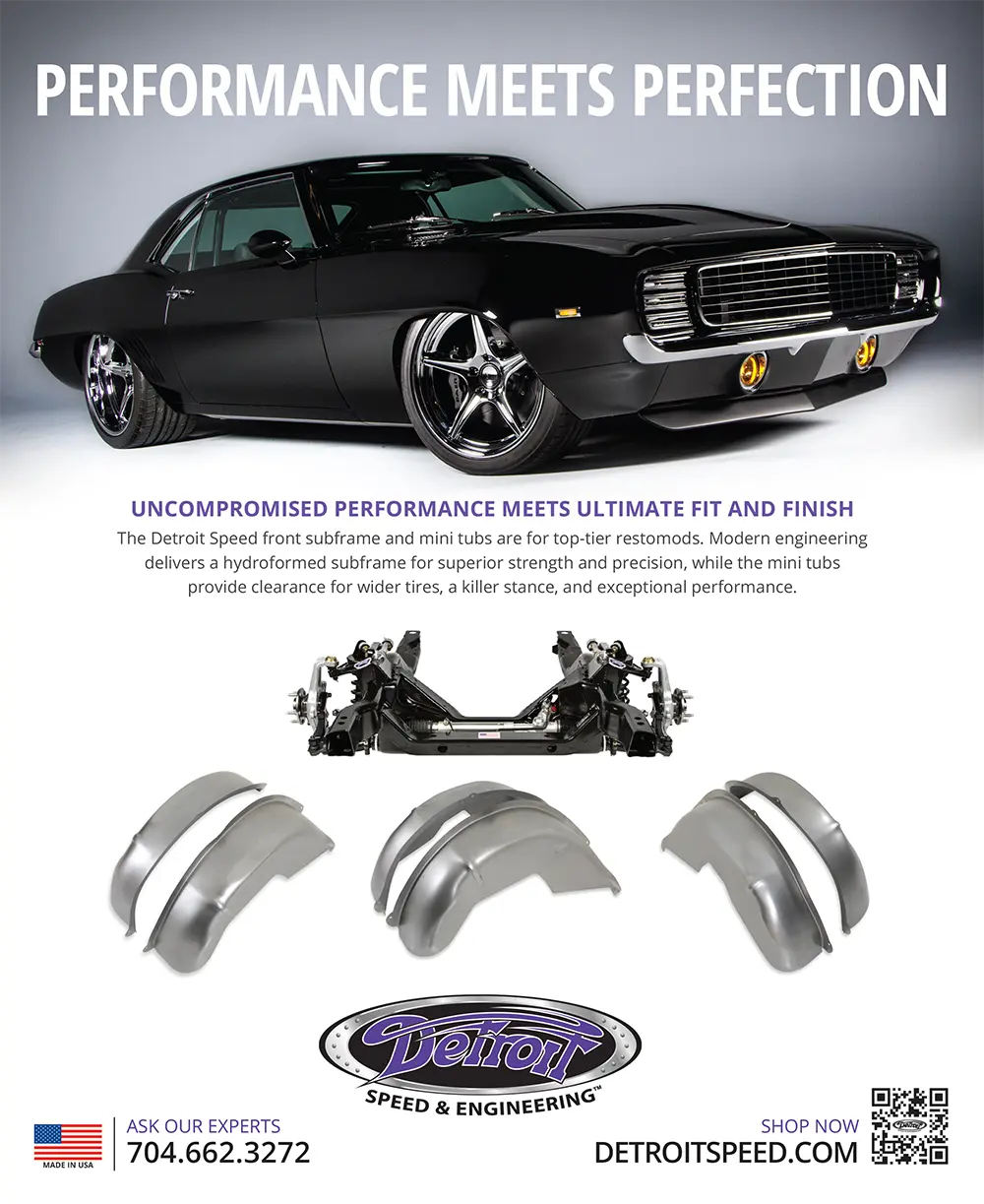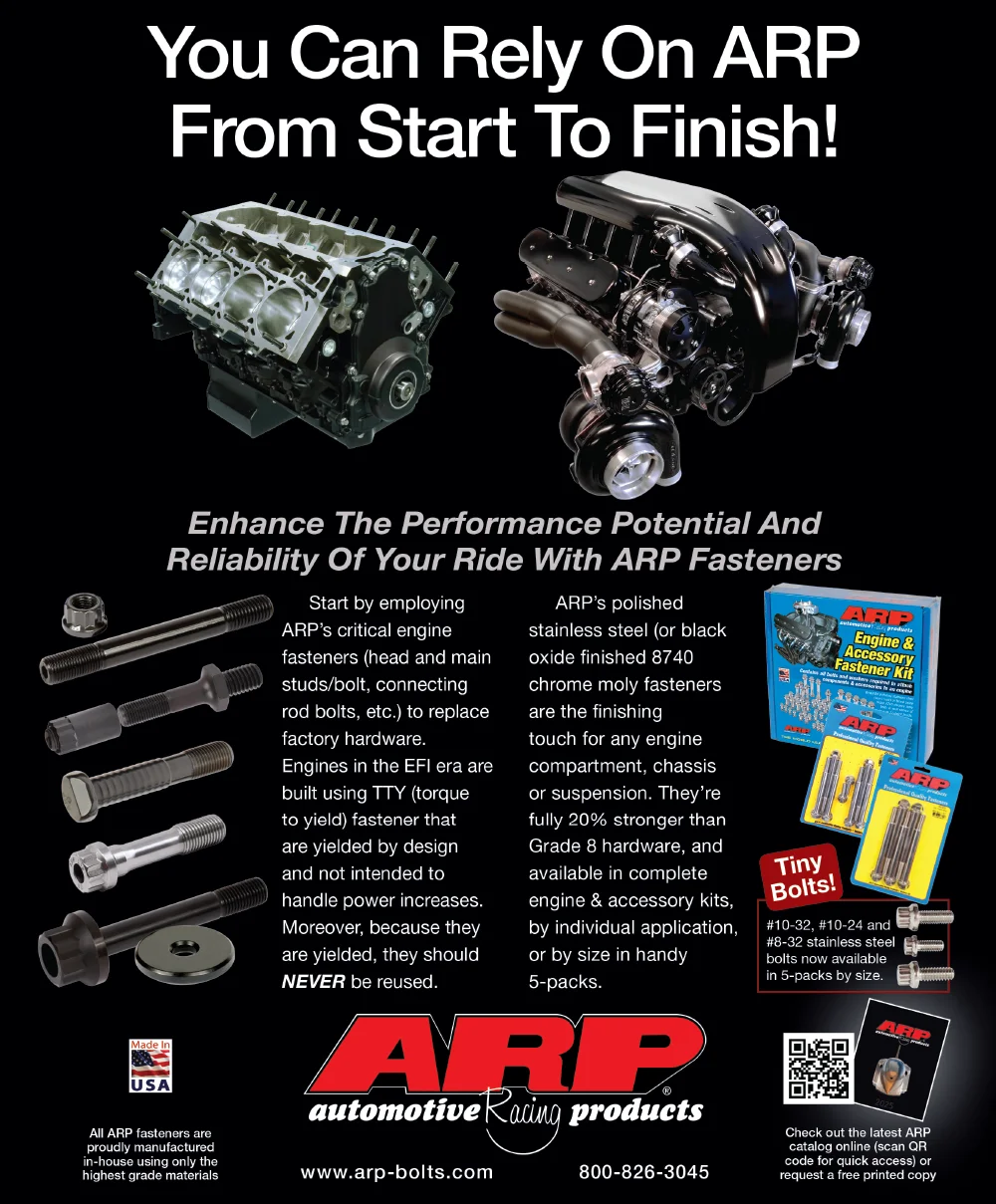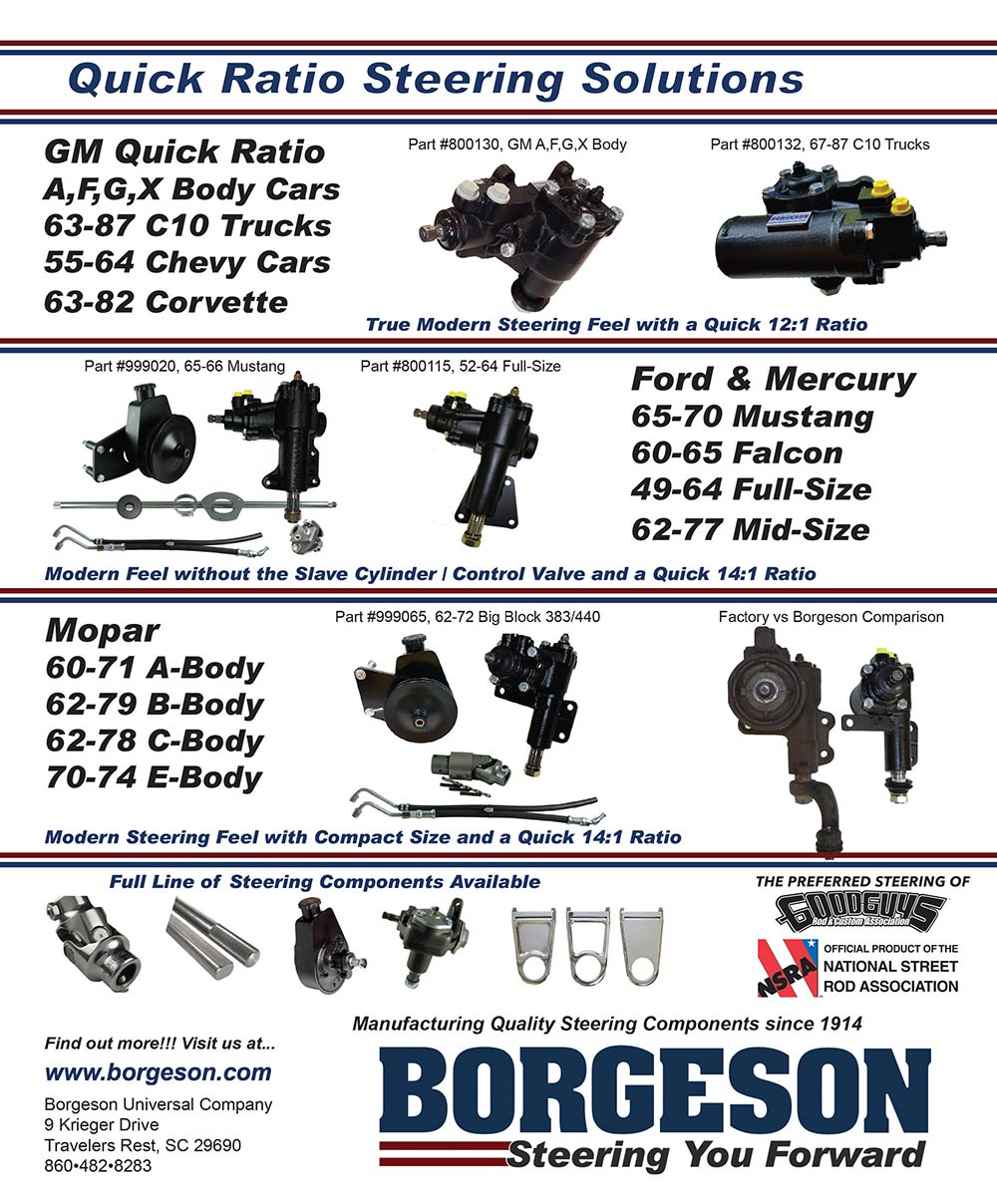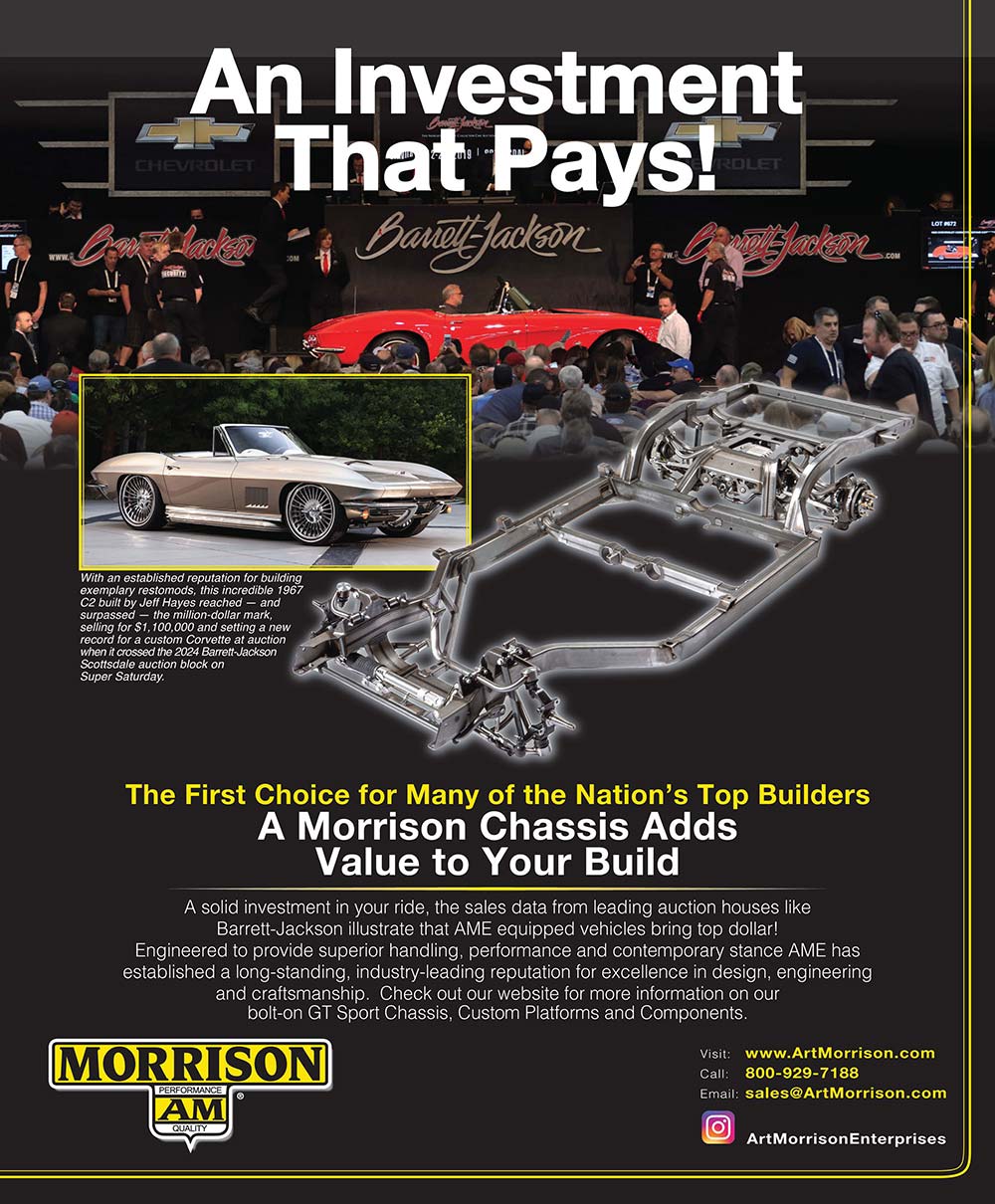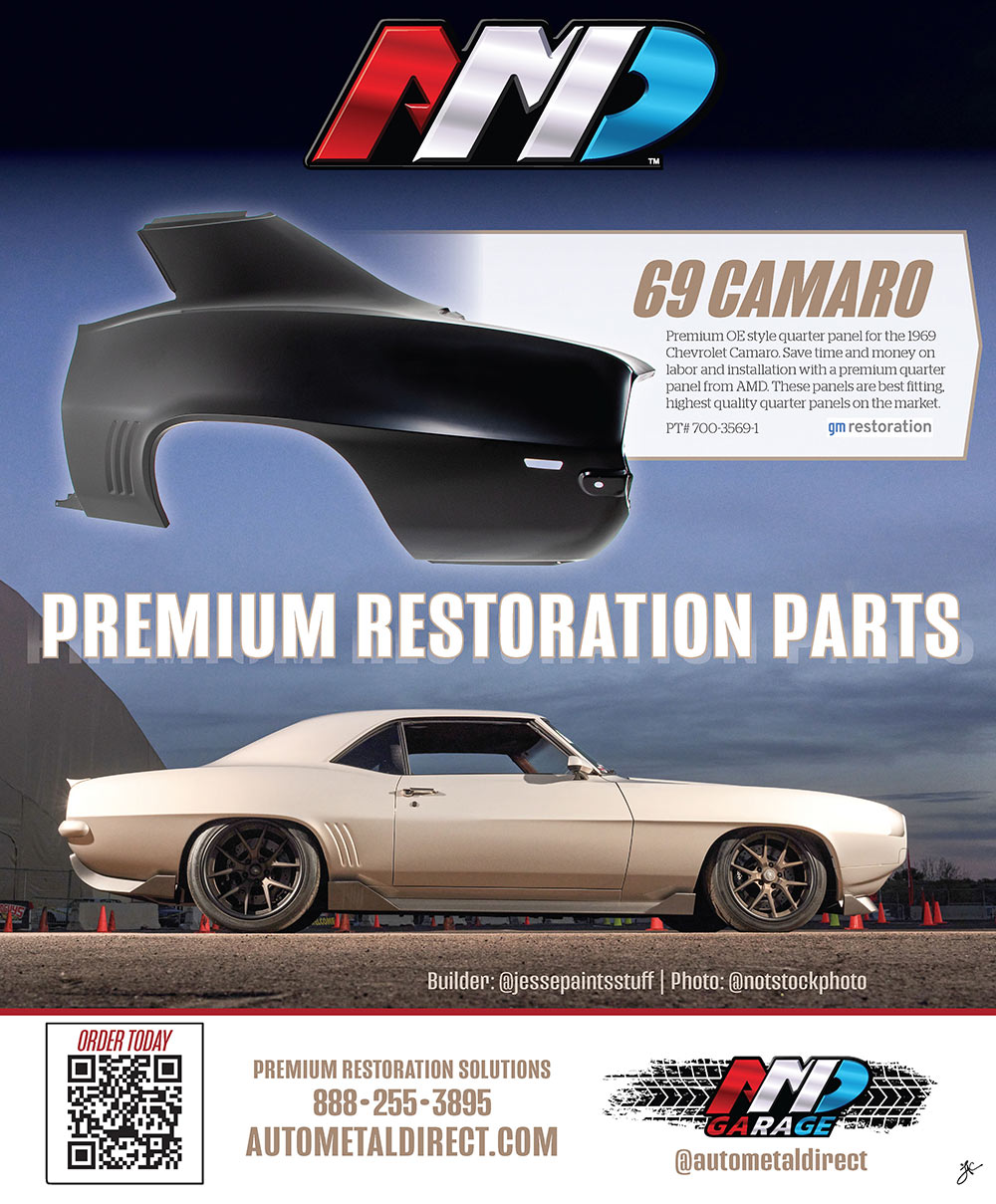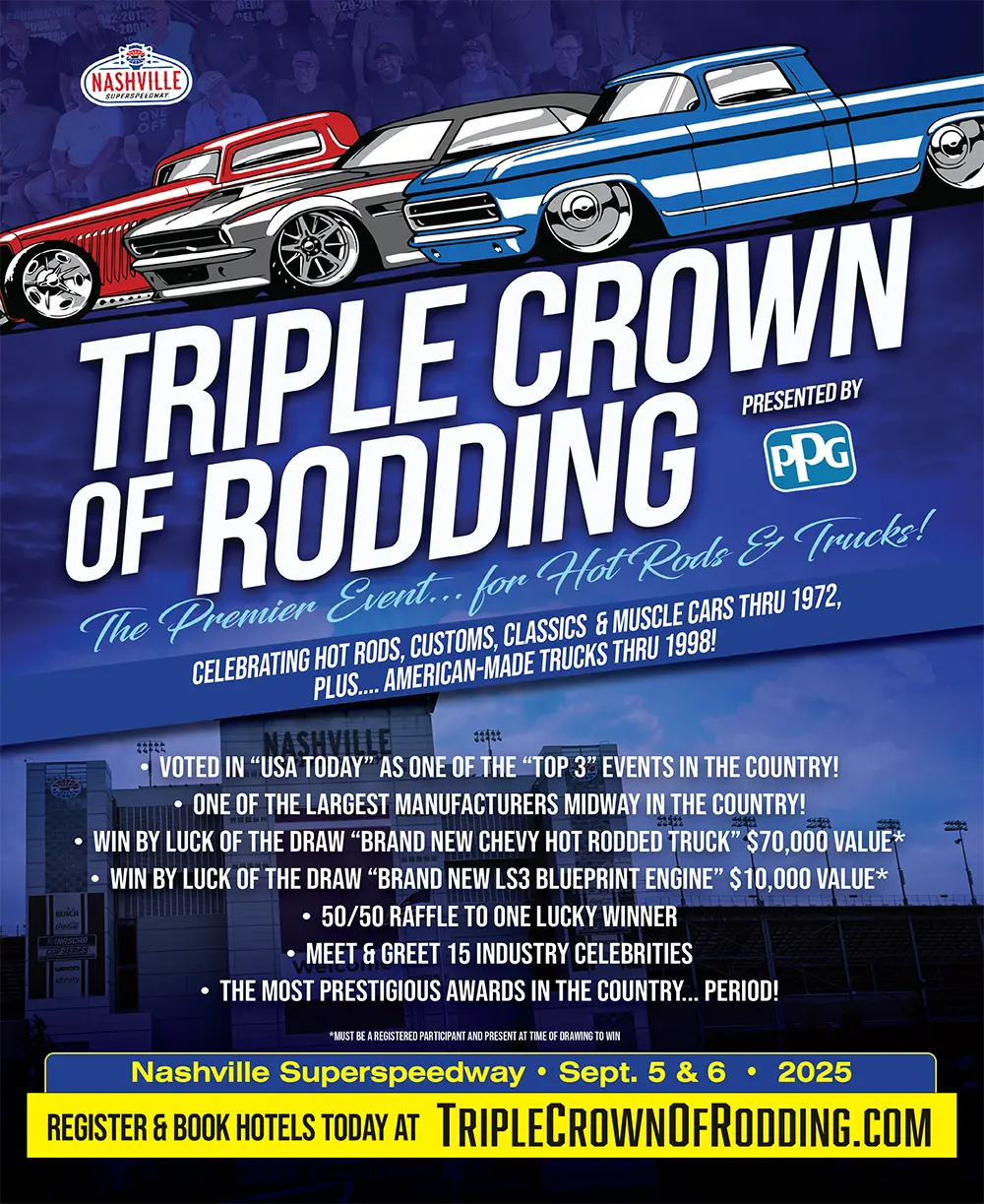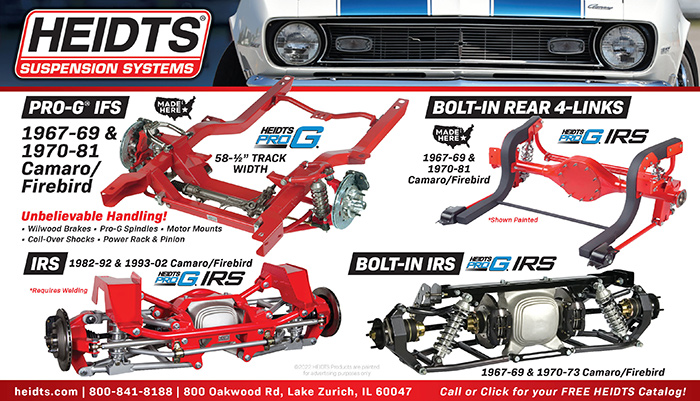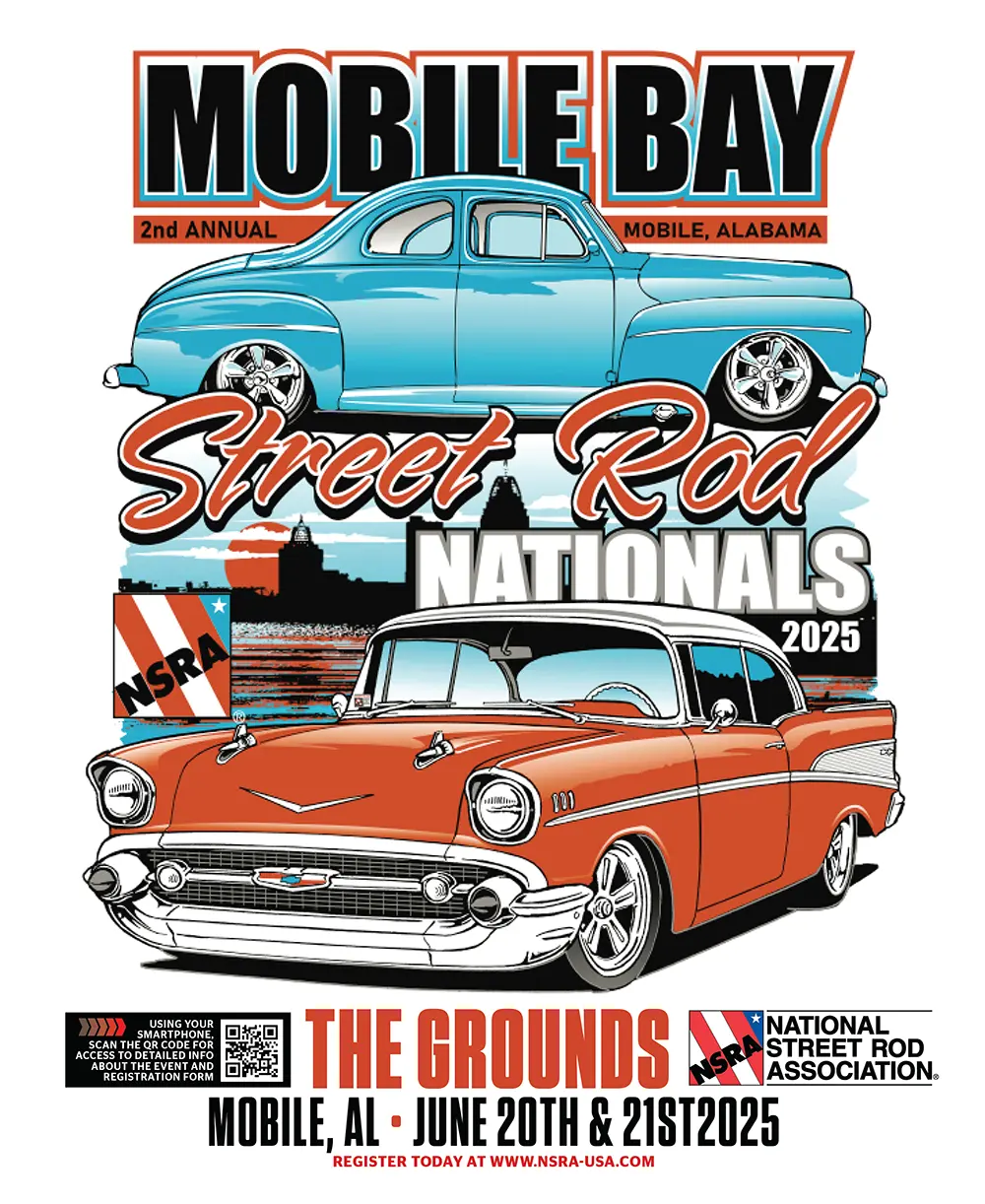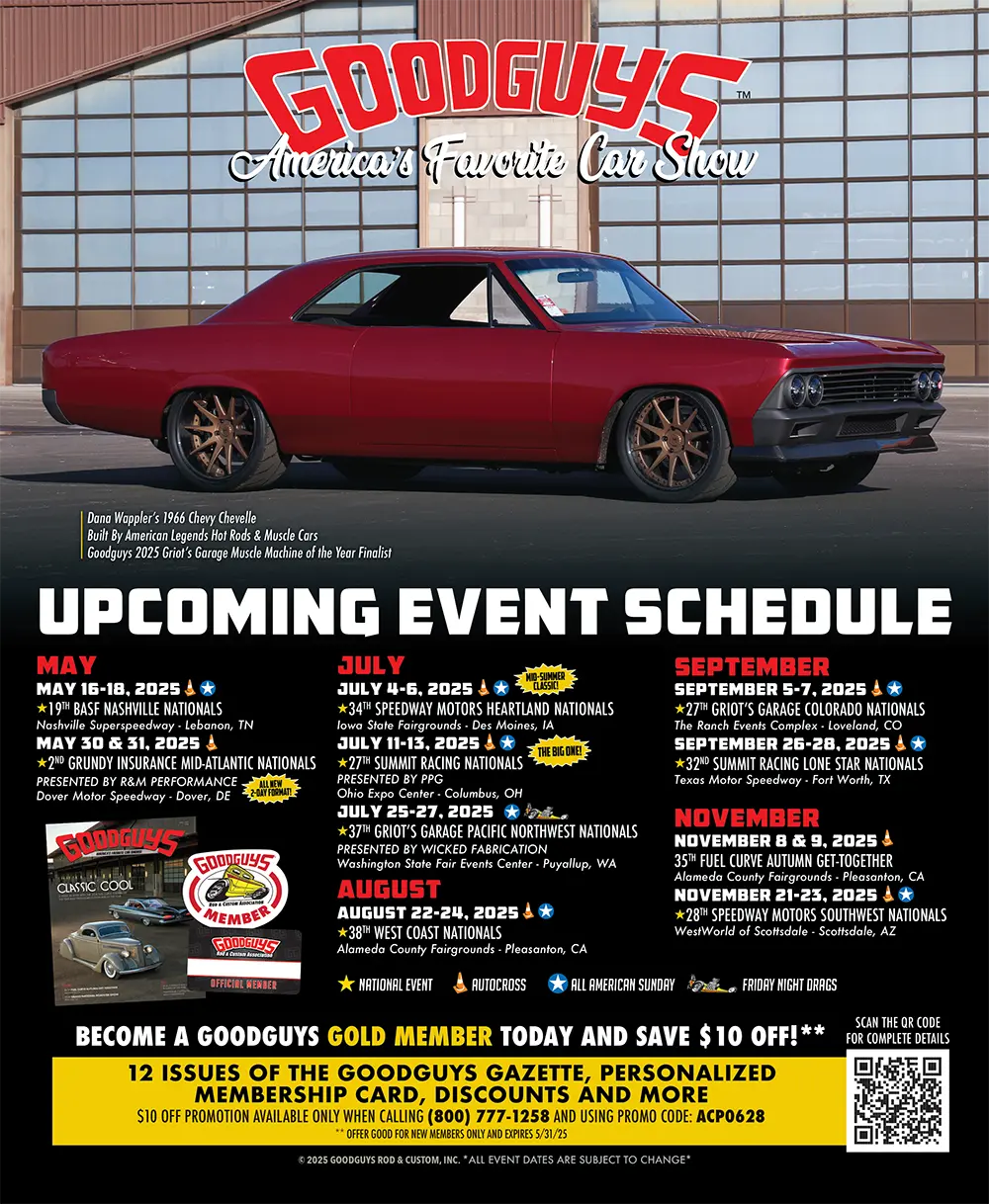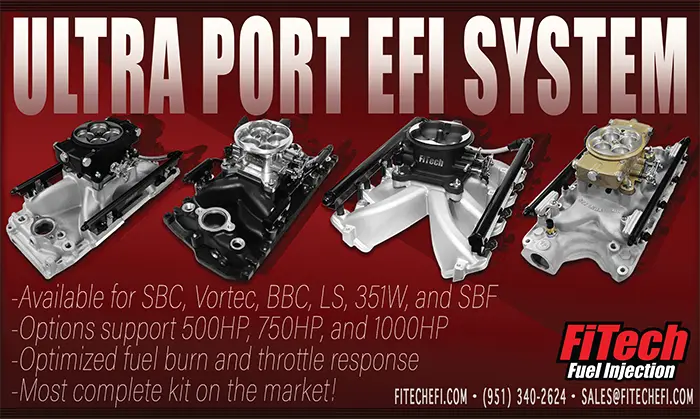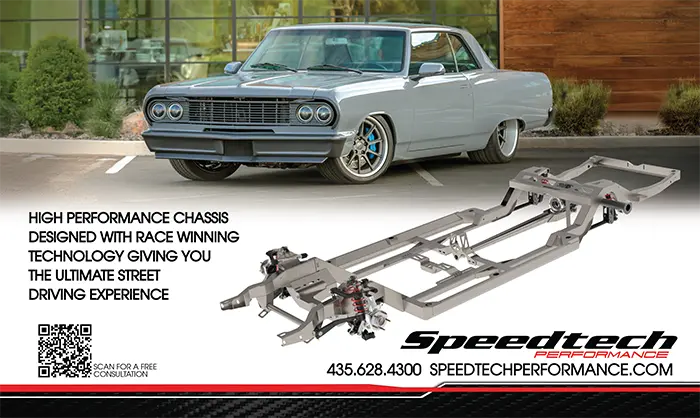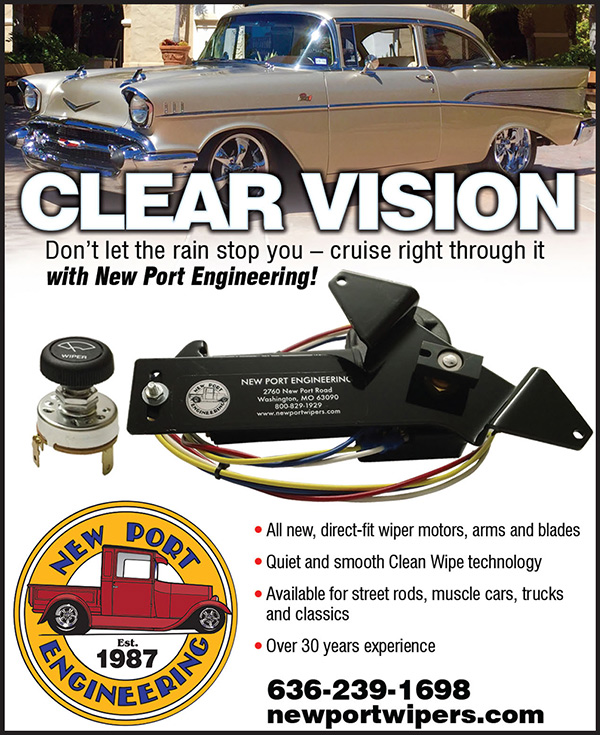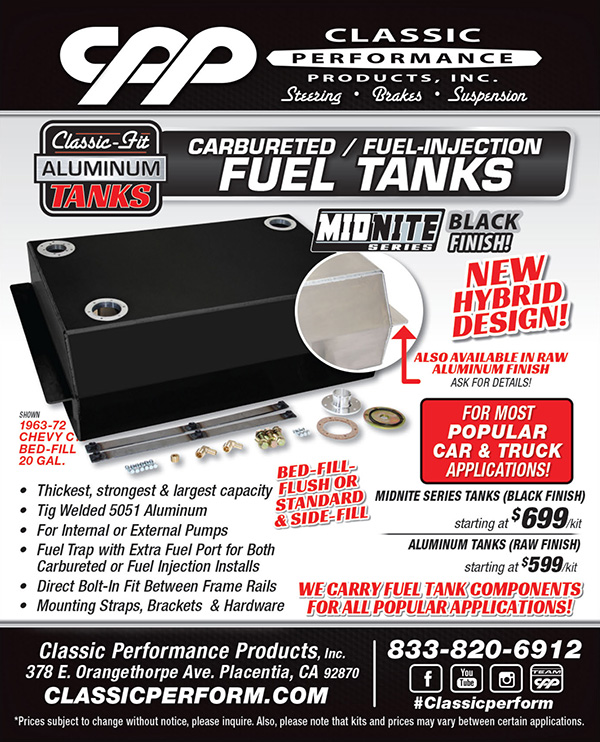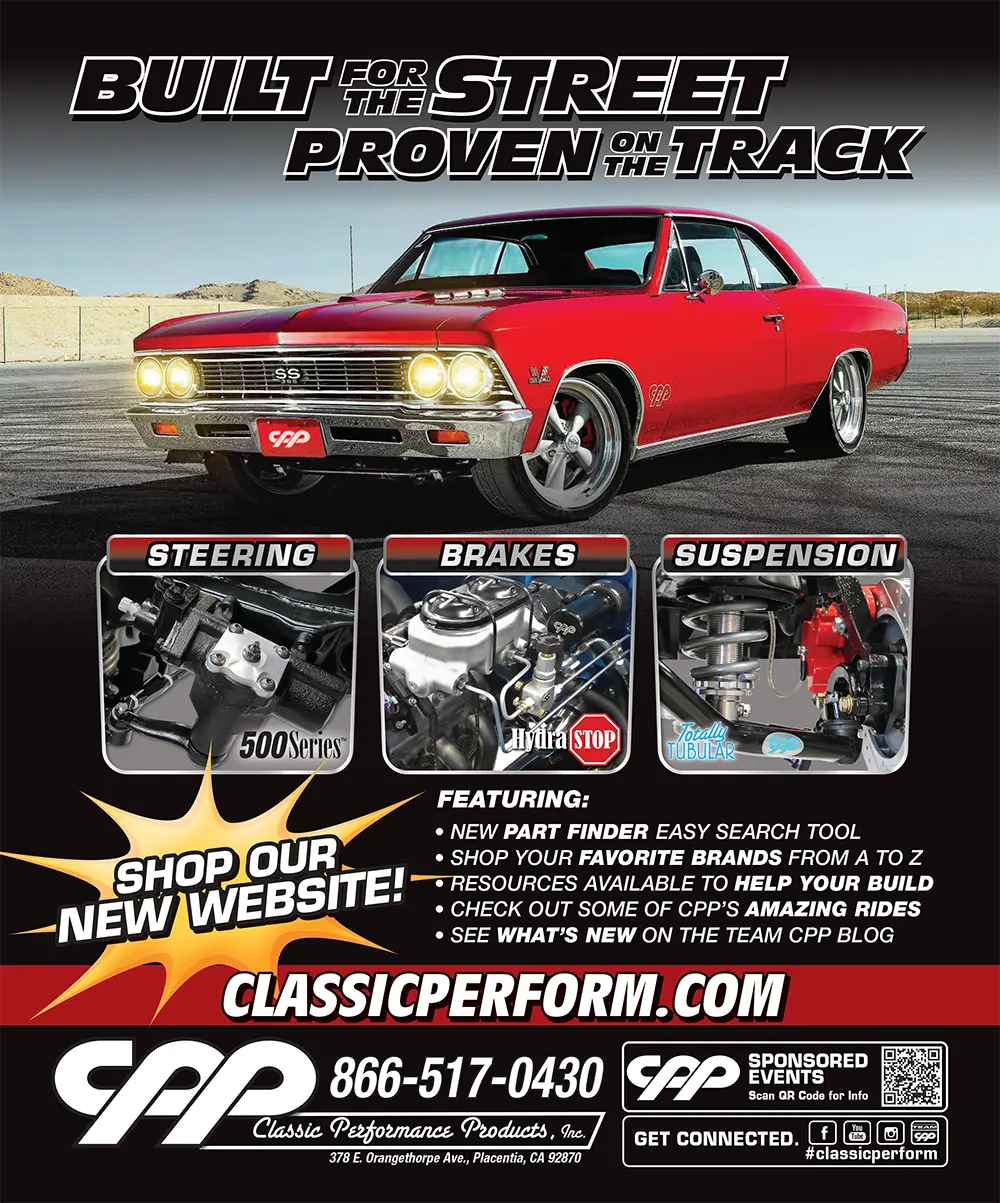
1957 Chevy Wagon
A/C Install, Part 2
Cooling Options
Choosing the Right
Radiator
 TOC
TOC



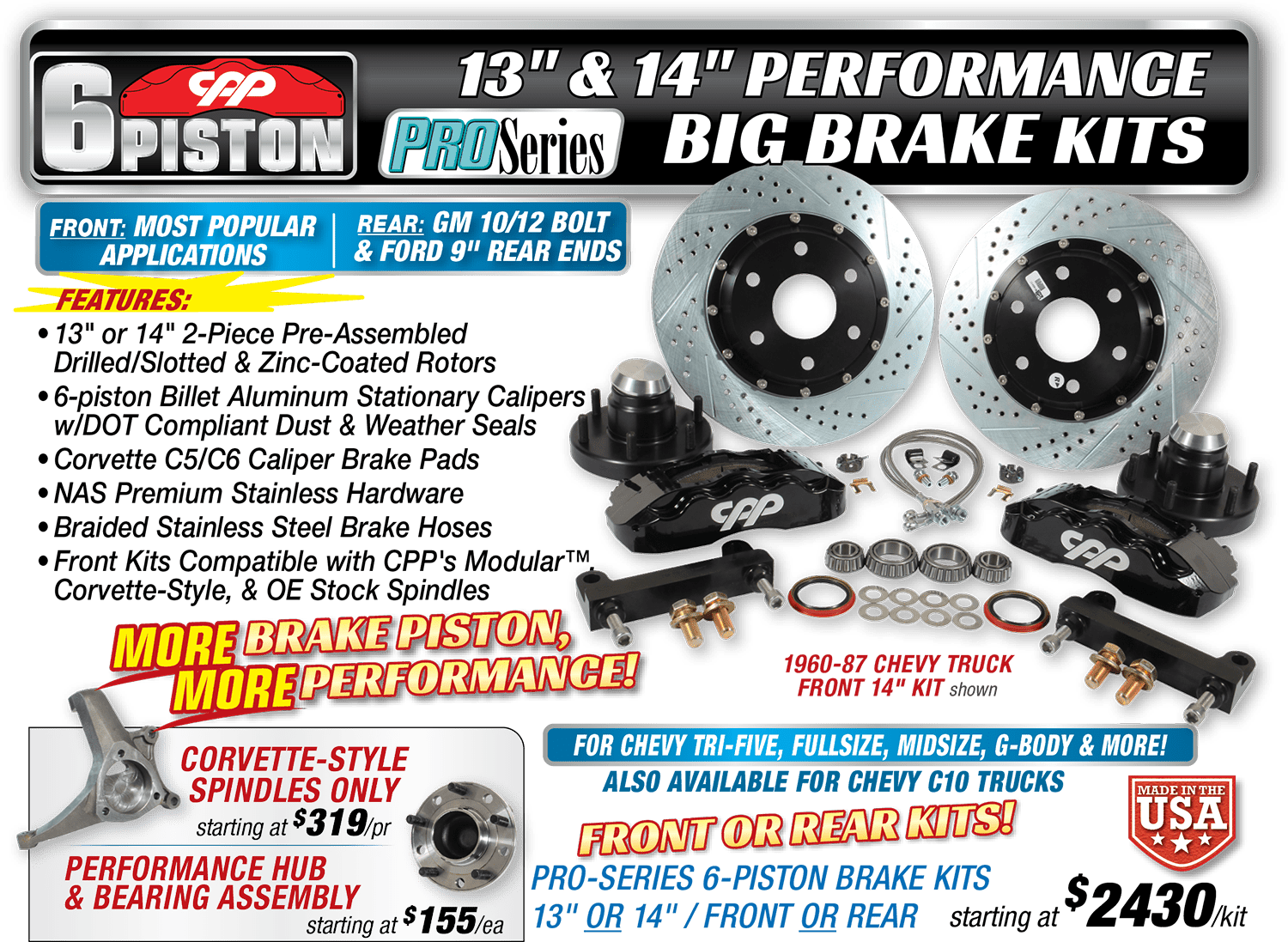
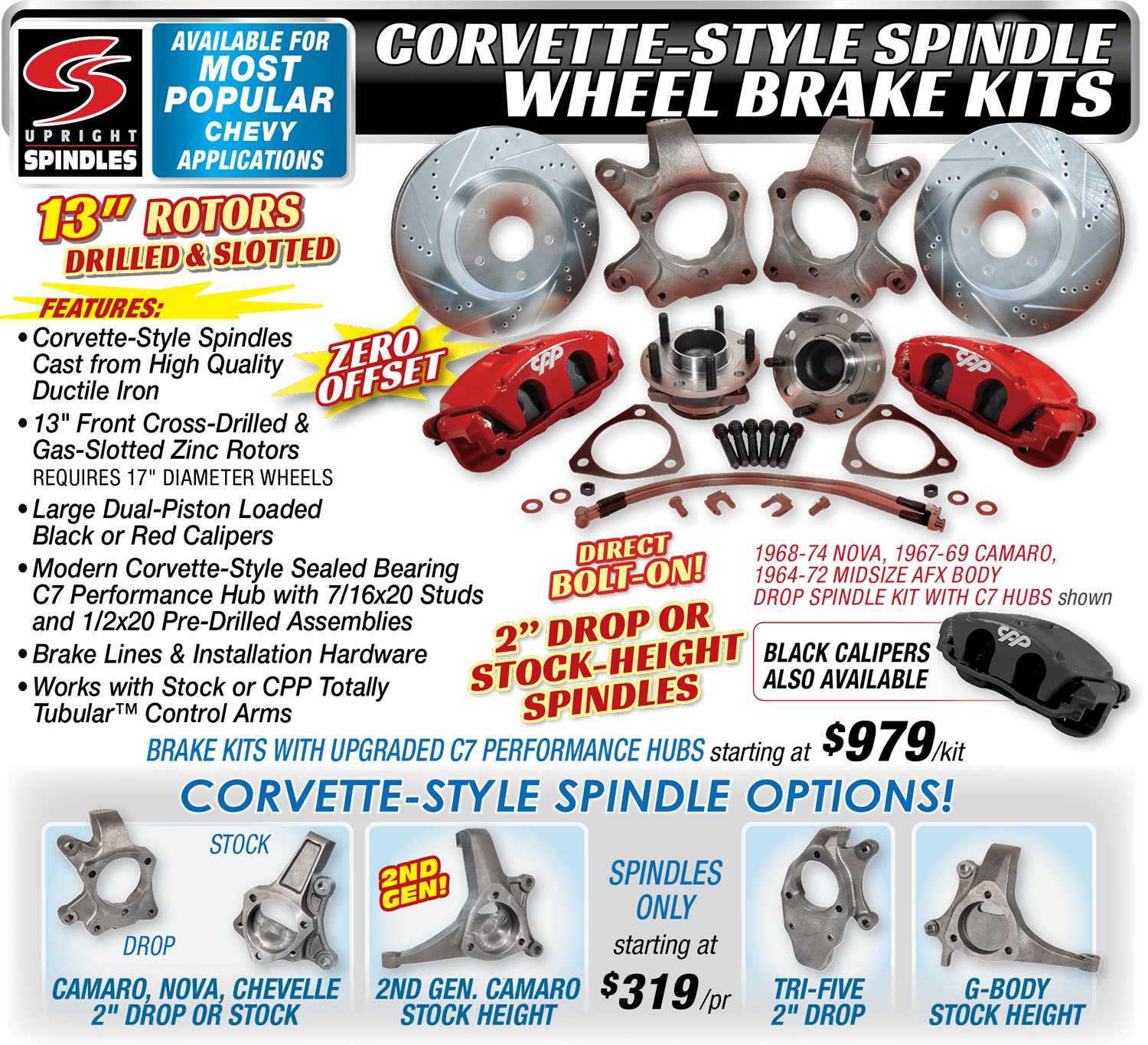
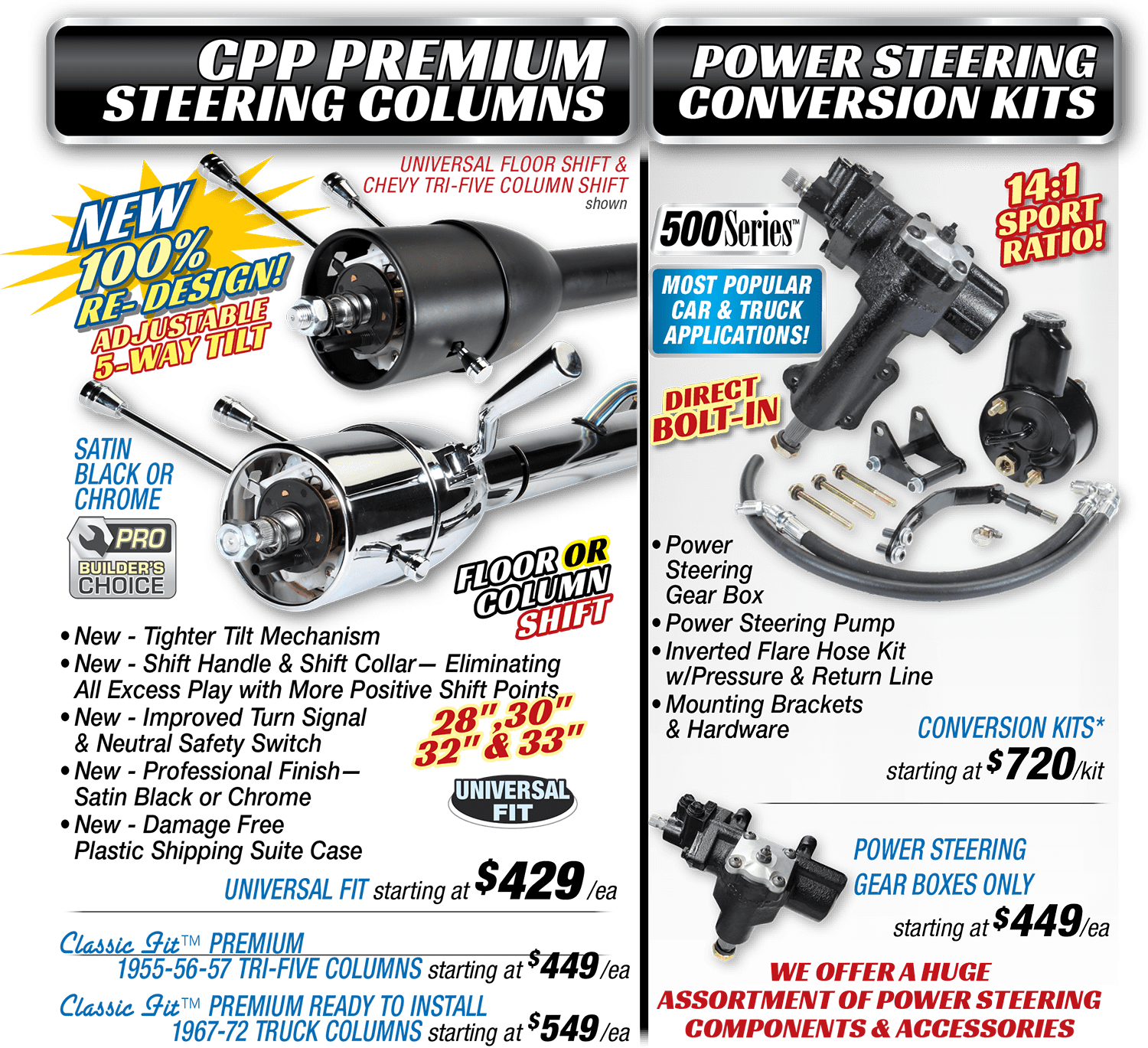
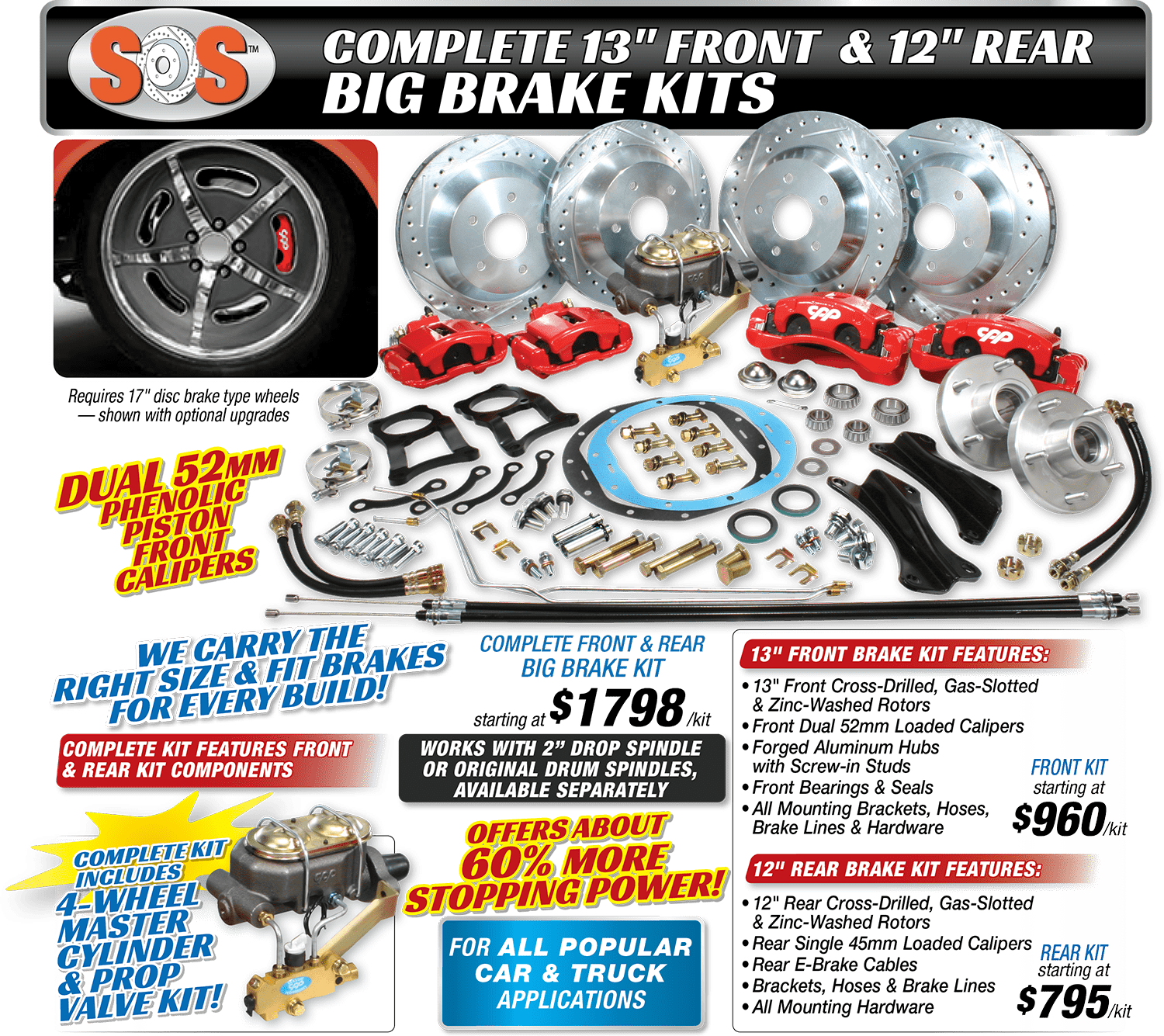
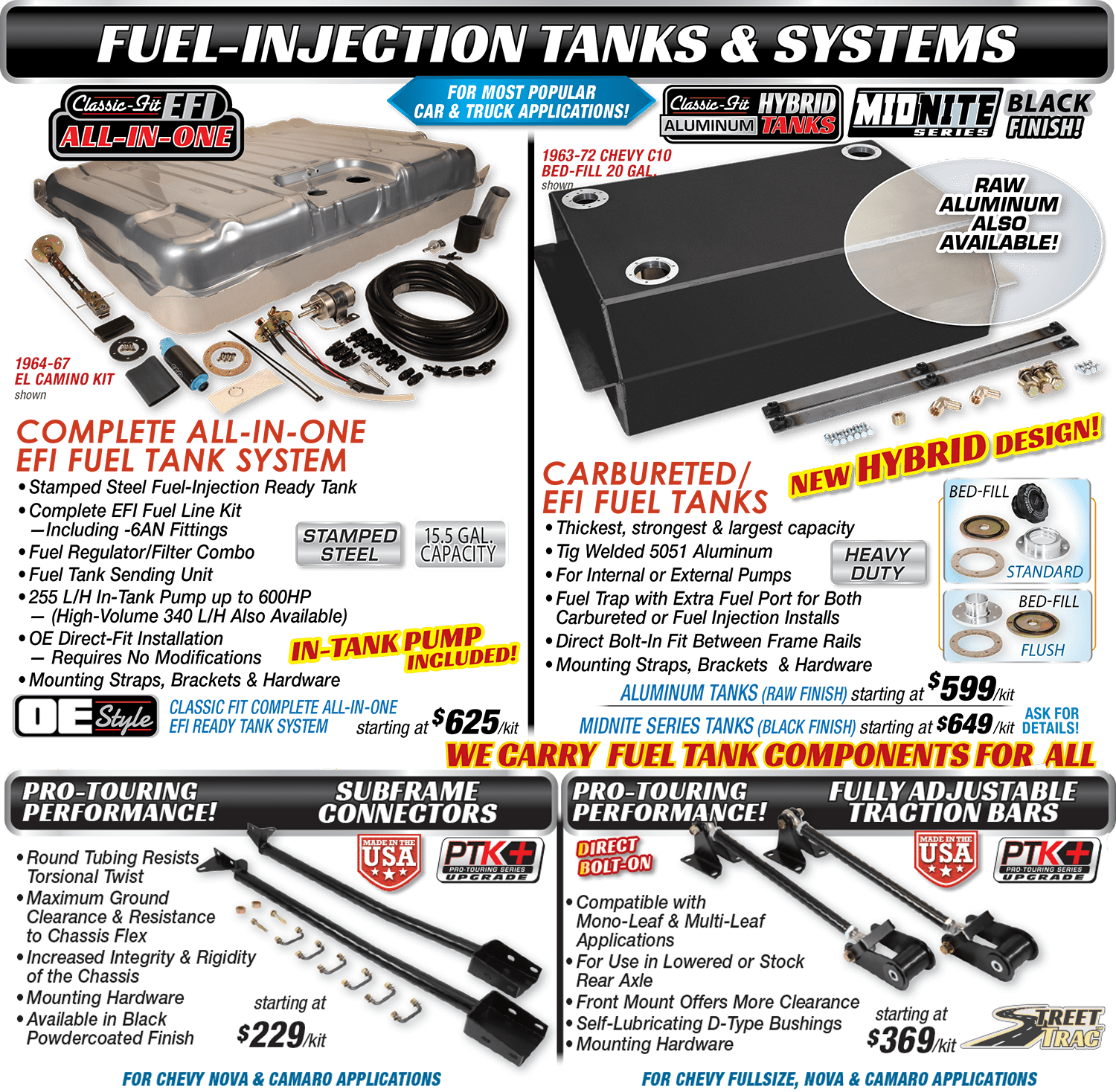

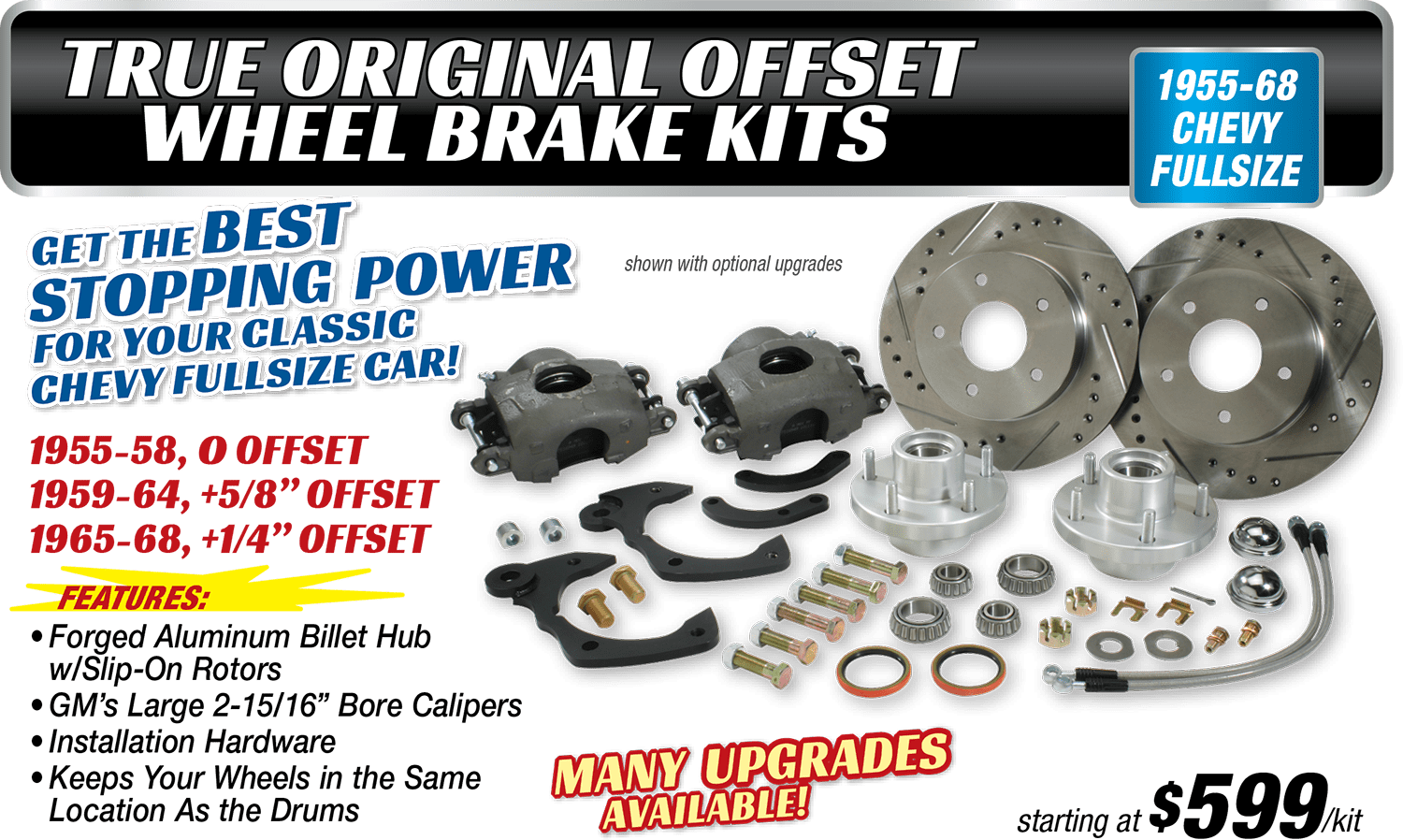
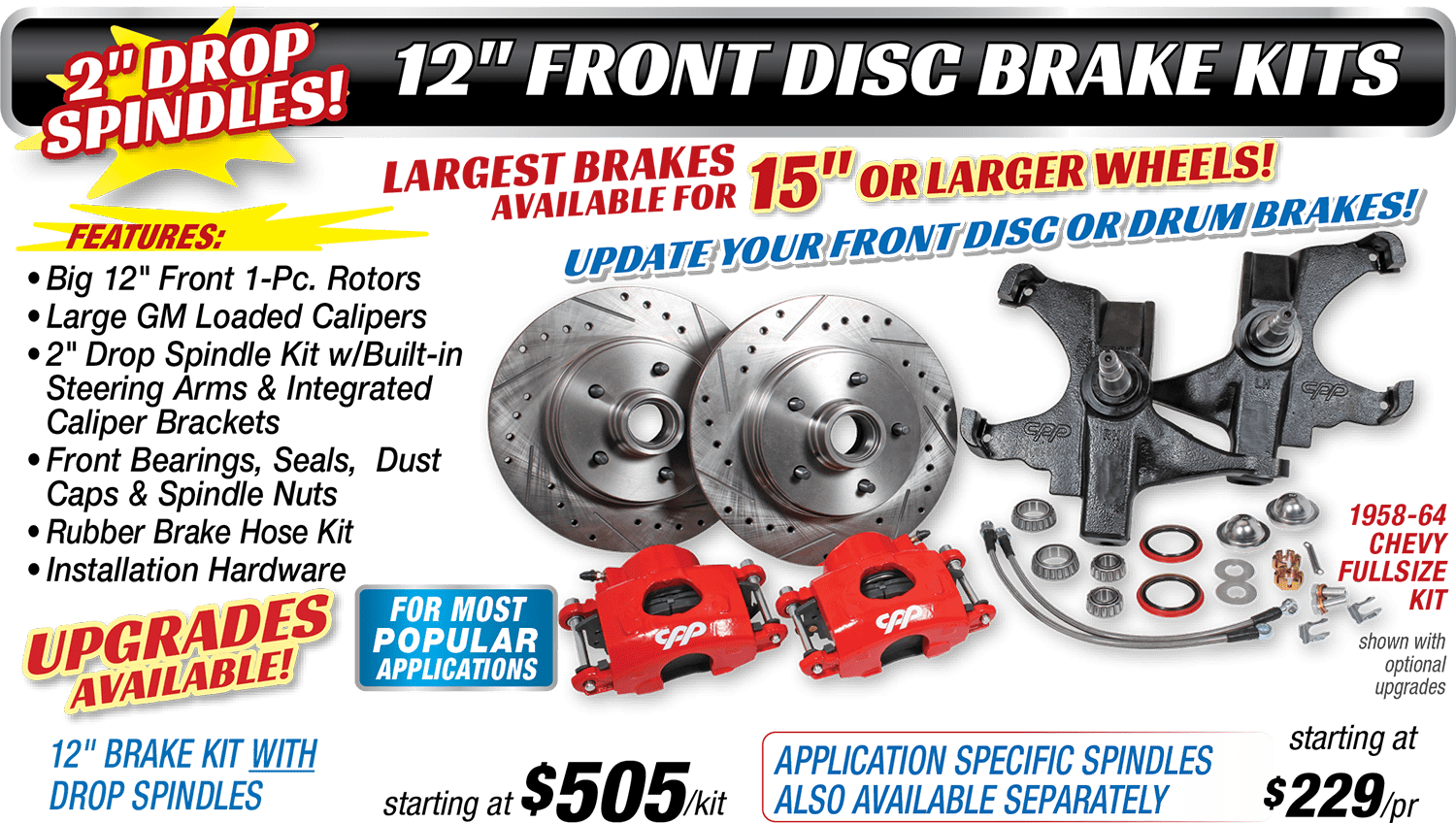
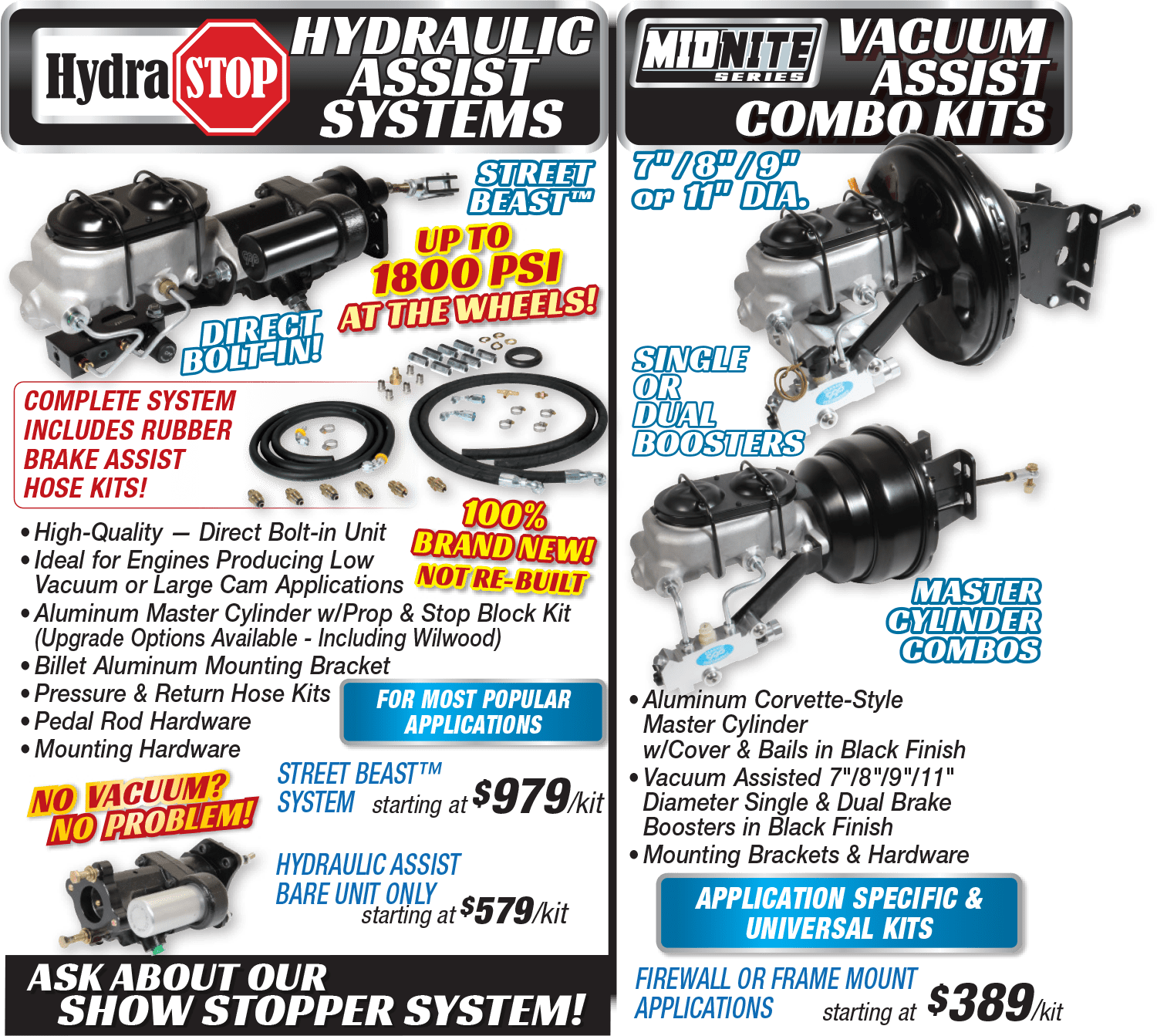
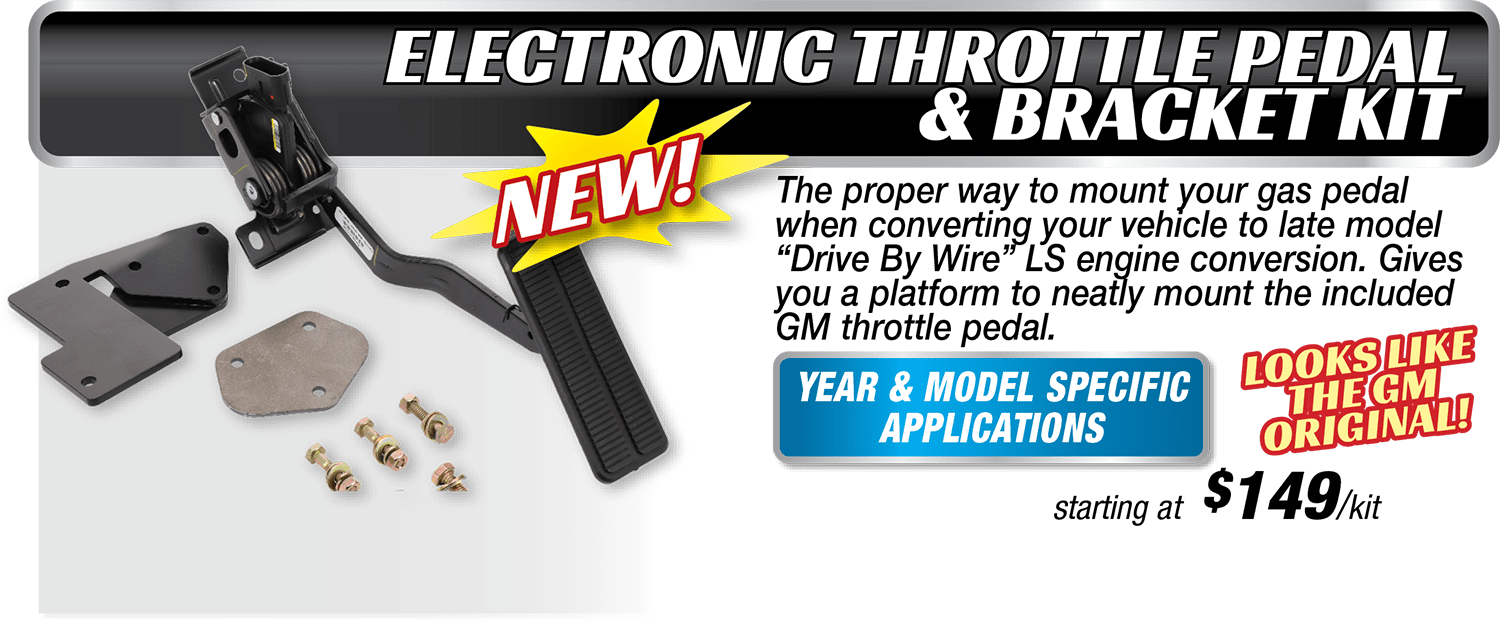
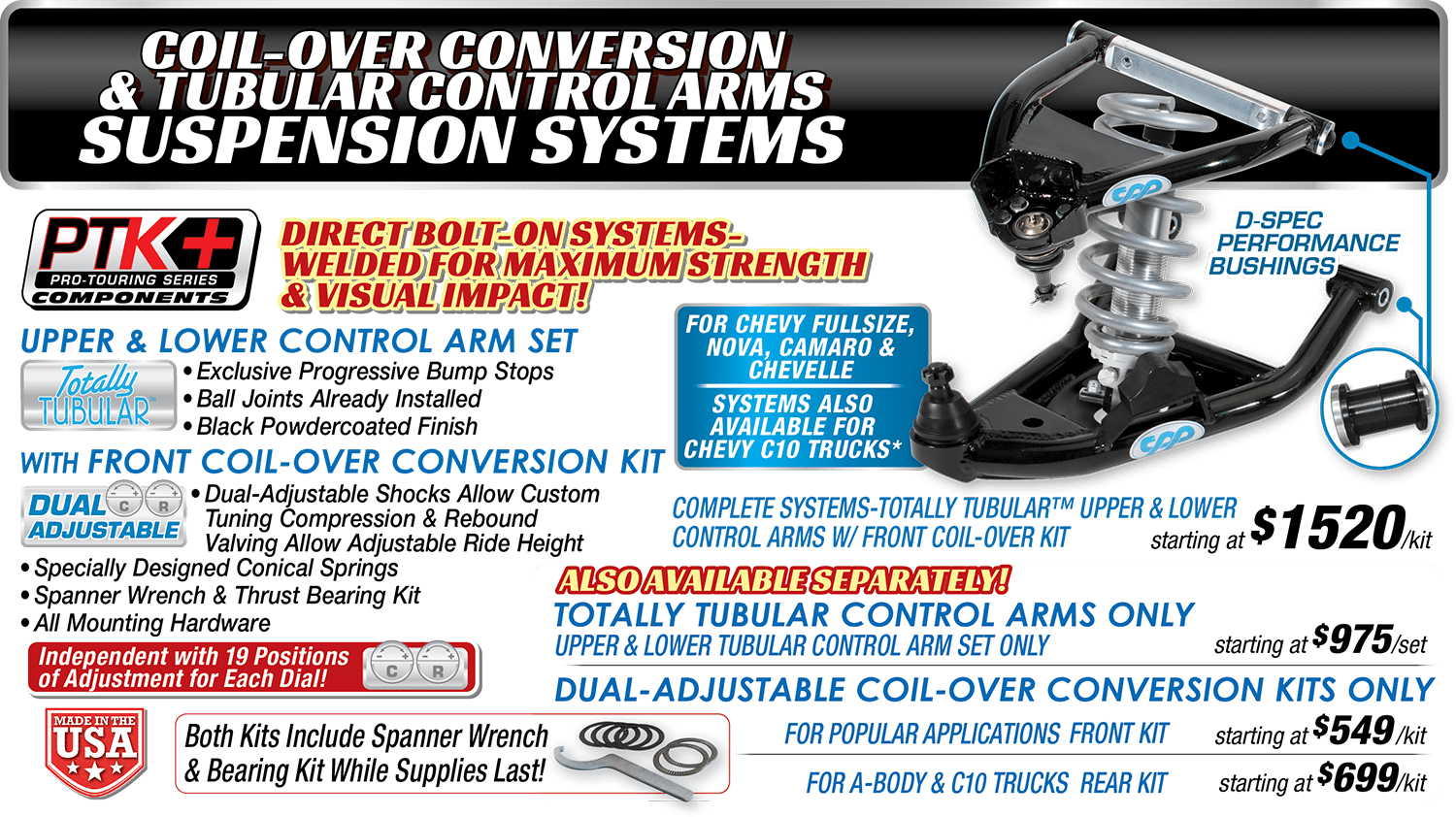
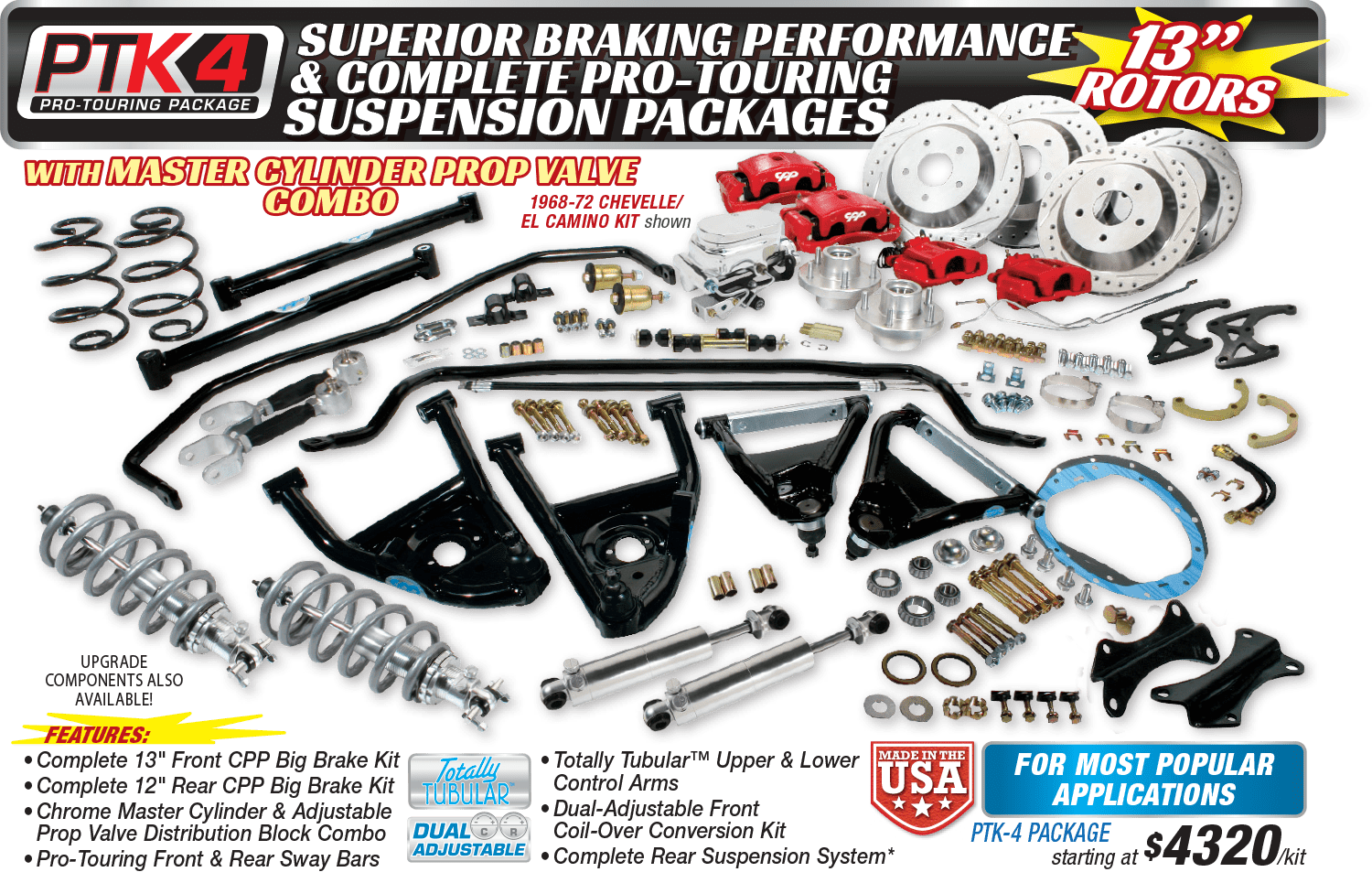
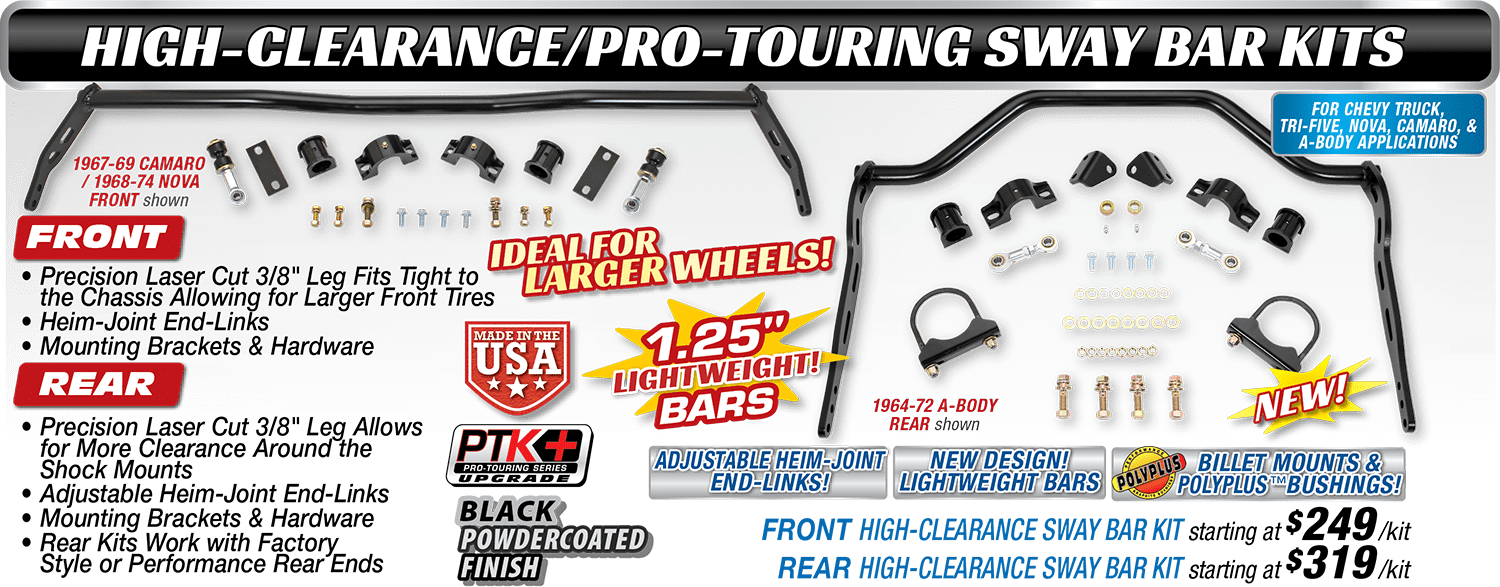

Wes Allison, “Rotten” Rodney Bauman, Shawn Brereton, Tommy Lee Byrd, Ron Ceridono, Grant Cox, John Gilbert, Tavis Highlander, Jeff Huneycutt, Barry Kluczyk, Scotty Lachenauer, Jason Lubken, John Machaqueiro, Ryan Manson, Jason Matthew, Josh Mishler, NotStock Photography, Todd Ryden, Jason Scudellari, Jeff Smith, Tim Sutton, Wes Taylor, and Chuck Vranas – Writers and Photographers
Travis Weeks Advertising Sales Manager
Mark Dewey National Sales Manager
Patrick Walsh Sales Representative
ads@inthegaragemedia.com
AllChevyPerformance.com
ClassicTruckPerformance.com
ModernRodding.com
InTheGarageMedia.com
inthegaragemedia.com “Online Store”
For bulk back issues of 10 copies or more, contact store@inthegaragemedia.com
info@inthegaragemedia.com
Editorial contributions are welcomed but editors recommend that contributors query first. Contribution inquiries should first be emailed to info@inthegaragemedia.com. Do not mail via USPS as we assume no responsibility for loss or damage thereto. IN THE GARAGE MEDIA, INC. reserves the right to use material at its discretion, and we reserve the right to edit material to meet our requirements. Upon publication, payment will be made at our current rate, and that said, payment will cover author’s and contributor’s rights of the contribution. Contributors’ act of emailing contribution shall constitute and express warranty that material is original and no infringement on the rights of others.

Copyright (c) 2025 IN THE GARAGE MEDIA, INC.
PRINTED IN U.S.A.


Cleveland, OH
(216) 281-8777
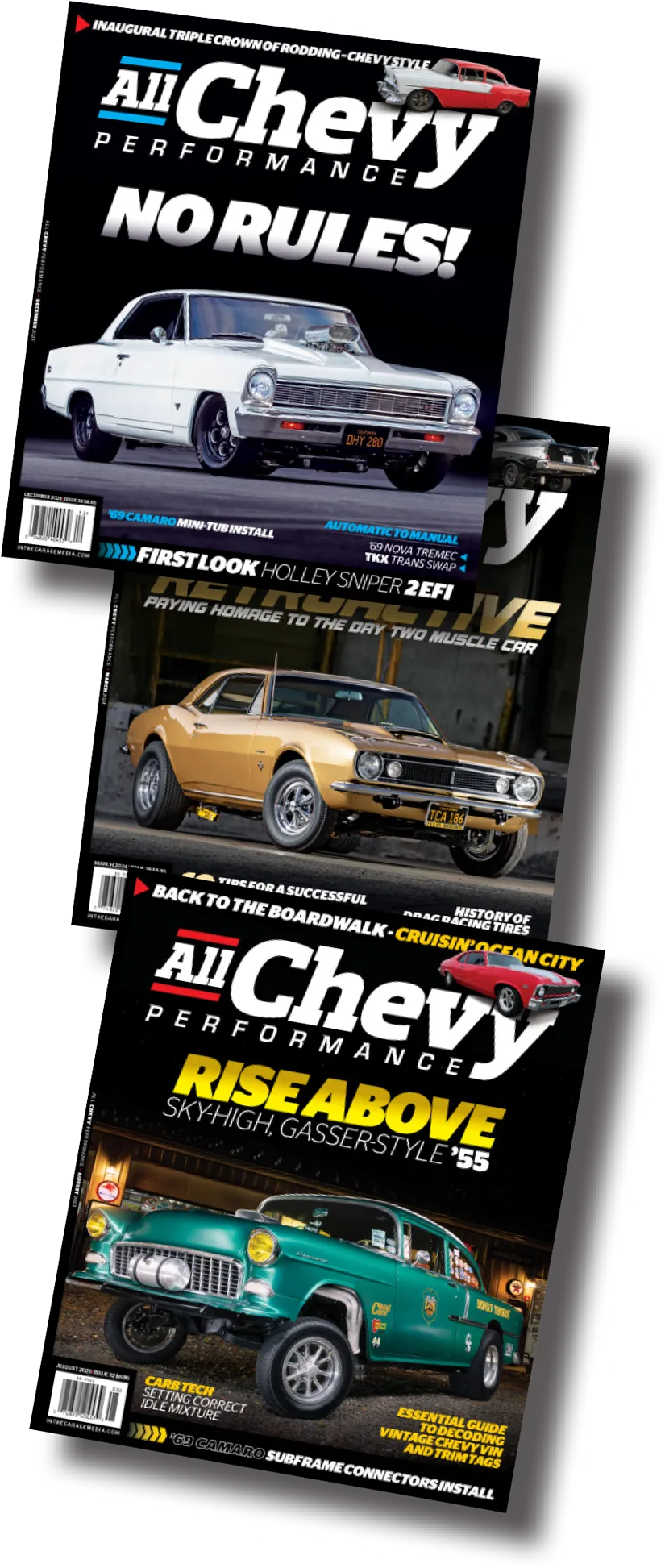
 firing up
firing up
 BY NICK LICATA
BY NICK LICATA

s we head deep into the fourth year of this magazine’s existence, I figured now would be a good time to take a moment and reach out to our loyal readers—that’s you—to make sure we are checking all the appropriate boxes when it comes to providing the content you like to see and read about in All Chevy Performance magazine. It’s going to require a little work on your part, as I’d like you to answer a few questions. The good thing is that questions are easy and there is no wrong answer—my favorite kind of tests in high school.
So, let’s get started.
Do you buy All Chevy Performance magazine for: A. car features, B. tech articles, or C. event coverage?
For those of you who read this magazine for the tech articles, which do you prefer most: engine tech, suspension and brake articles, paint and body tips, electrical pieces, or are you interested in all technical aspects regarding classic Chevy muscle cars?
For the engine guys, which engines do you prefer to read and learn about most: LS, LT, small-block, or big-block?
On the suspension side, do you want to see more full chassis installs or are you after more bolt-on suspension articles?
 PARTS BIN
PARTS BIN



 CHEVY CONCEPTS
CHEVY CONCEPTSInTheGarageMedia.com
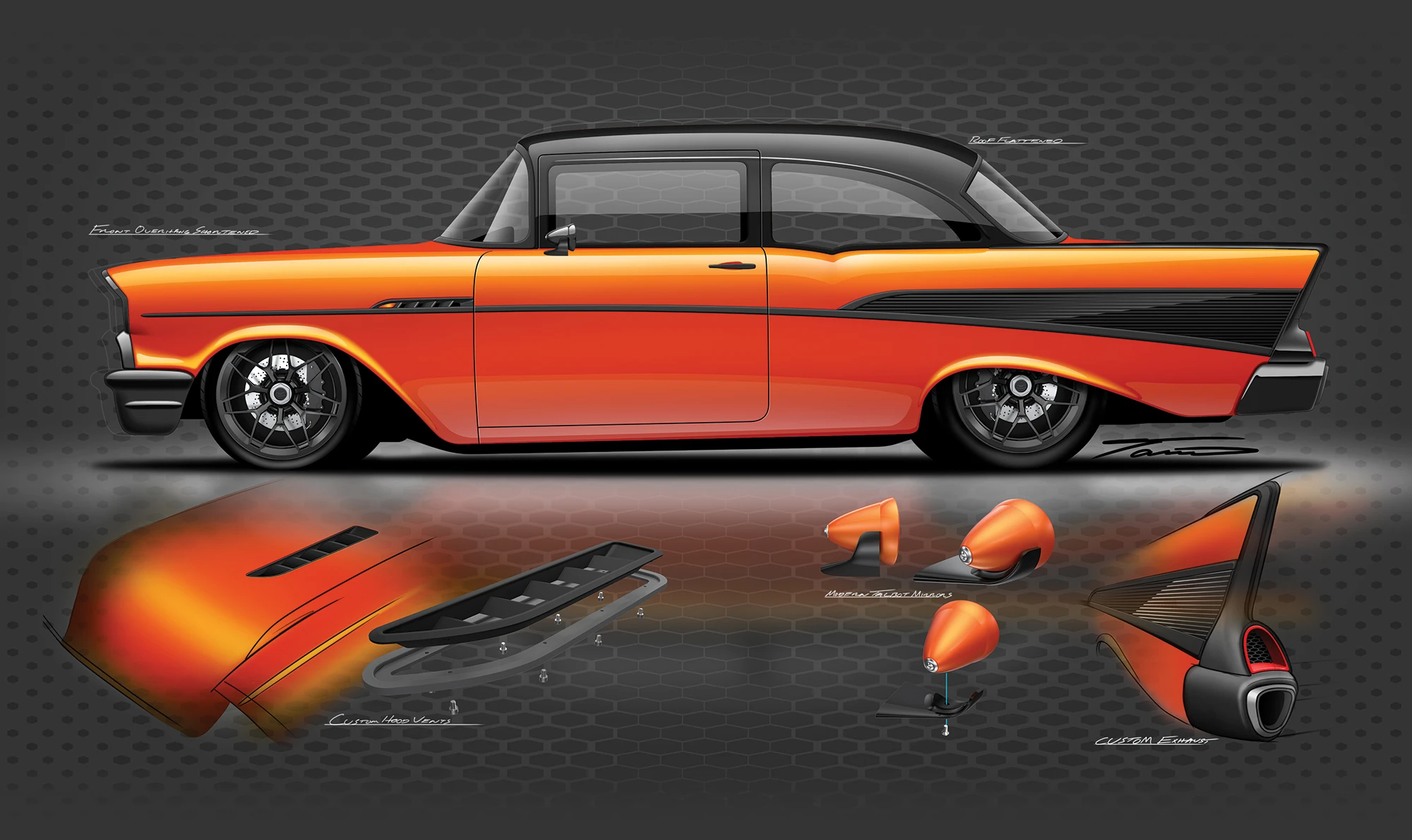
 @TavisHighlander
@TavisHighlander Builder: Ironworks Speed & Kustom (Bakersfield, CA)
Owner: Leo Santana
 Text & Rendering by Tavis Highlander
Text & Rendering by Tavis Highlander
his ’57 is in your face right from the get-go. Bright metallic orange paint mixes with black trim accents to create a modern twist on the classic shape. Modifications to the body will include a shortened front overhang with the front wheels pushed forward just a bit. The roof will have some of the mass removed by flattening the overall curve that it follows.
In the hood you’ll find a pair of custom heat extractors that also match the fender vents. Custom mirrors have a nod to the classic Talbot shape, but a custom mounting arm ties in with the theme of the car. At the rear, you’ll find a heavy departure from stock. The taillights have been redesigned and right below them is a custom triangular exhaust.
 FEATURE
FEATURE
 Images by NotStock Photography
Images by NotStock Photographyucky or smart? That’s the question when considering Ryan Gebhardt and his remarkable journey with his very first car. Almost 40 years ago Ryan’s purchase of a 1971 Chevelle SS as a teenager set the stage for a decades-long story that intertwined family memories, professional growth, and a relentless passion for cars.
“I purchased the car when I was 14 years old with money I made from mowing lawns,” Ryan reveals. “It was in 1987 when I found the Chevelle behind a used car lot building in Blountville, Tennessee. The original color was Placer Gold with a matching gold interior. It was an SS big-block car with a 454, four-speed, a 12-bolt rearend.”
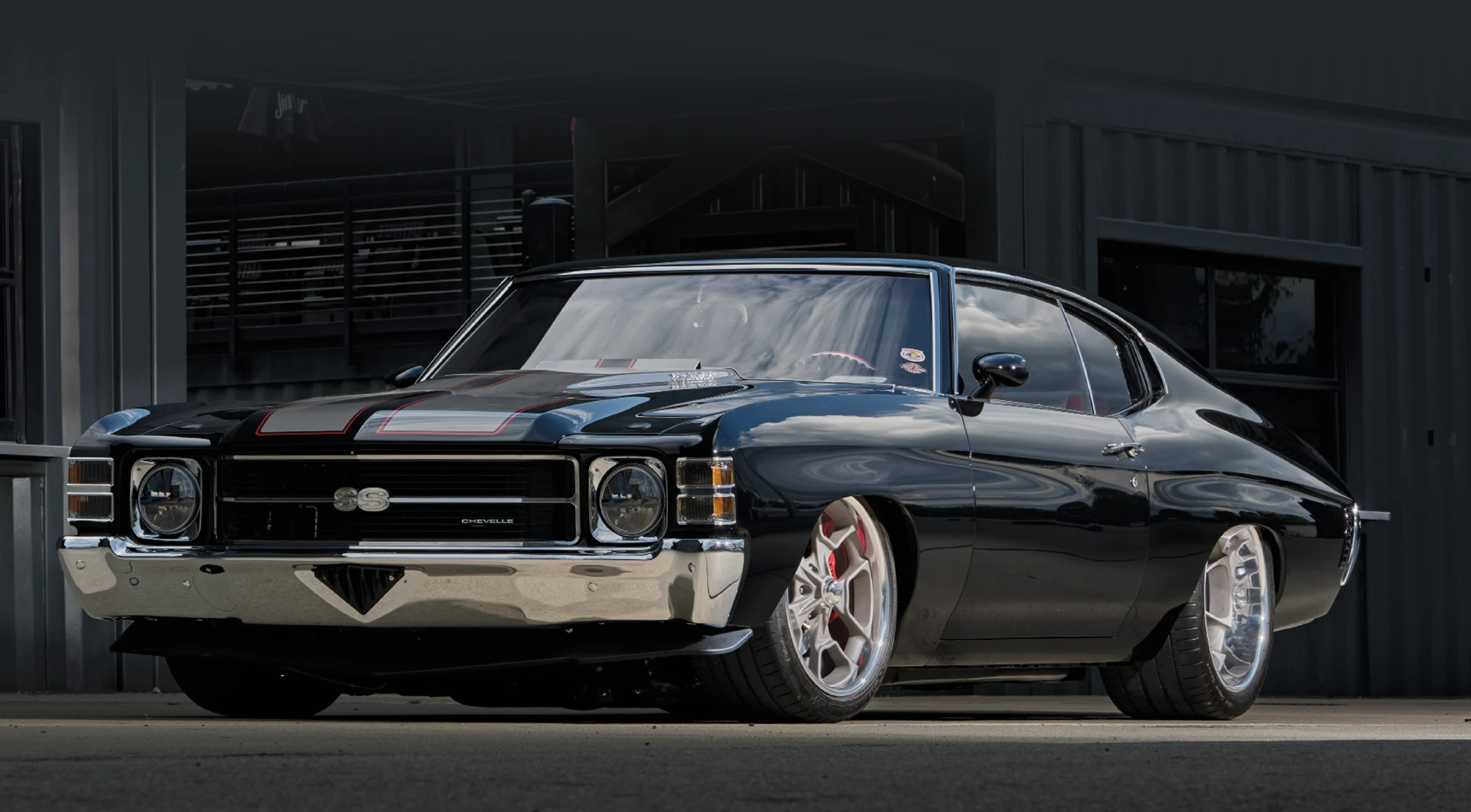
 TECH
TECH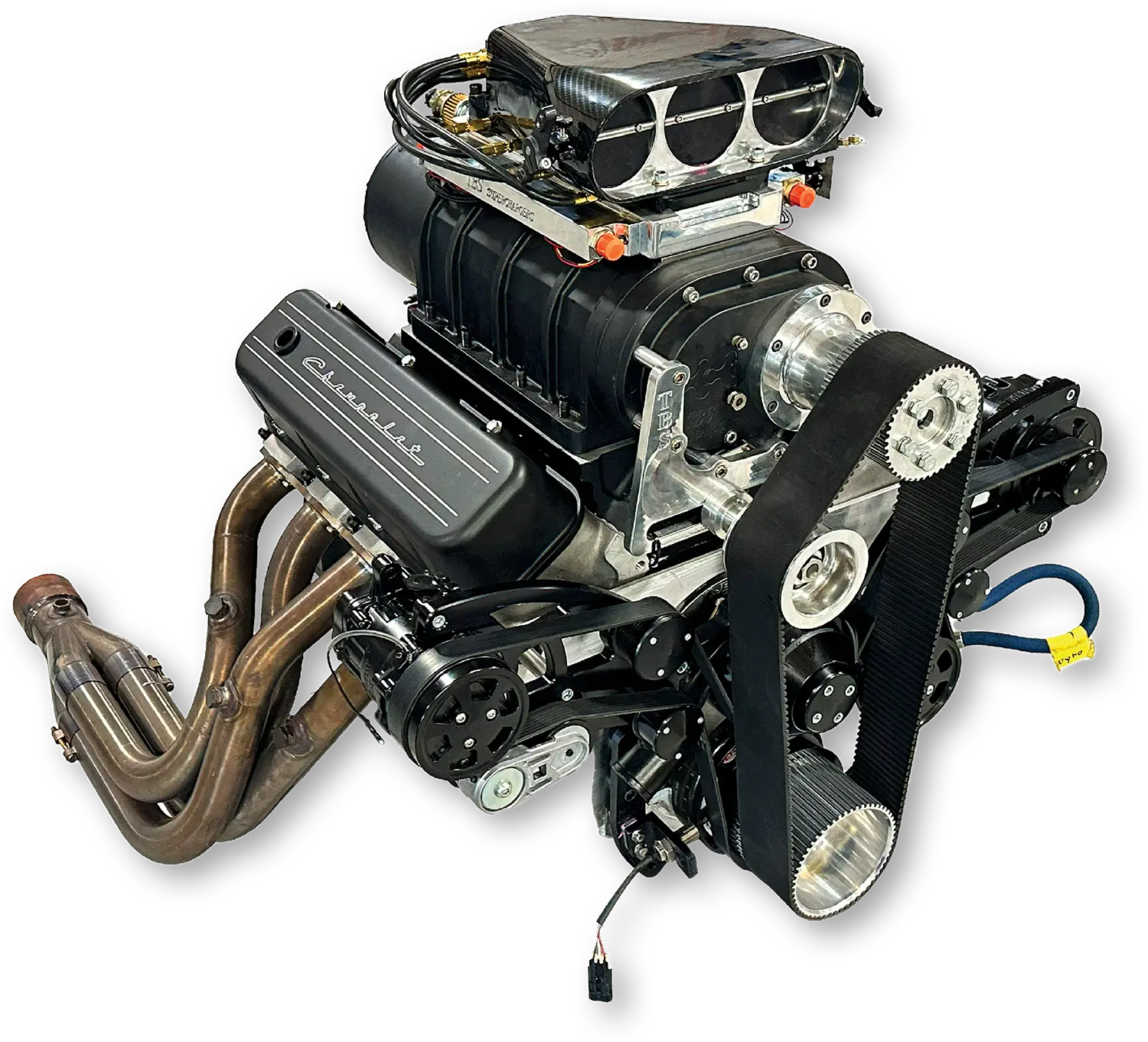

 Images by THE AUTHOR
Images by THE AUTHORhe old adage about making power goes: “There’s no replacement for displacement.”
Every dyed-in-the-wool car guy knows it. We’ve all heard it. And we all know the rejoinder is: “Unless you have boost.”
Yes, boost is the answer when it comes to helping little engines make big power. Whether it’s a supercharger or turbo, boost makes magic happen. So, what happens when you have both? What happens when you already have boost and add displacement? That, friends, is the question of the day.
 FEATURE
FEATURE

 Images by THE AUTHOR
Images by THE AUTHORmagine wanting a specific year, make, and model vehicle your whole life only to get ahold of one well into adulthood. Now imagine the feeling of starting the hunt for yet another car of the exact same ilk because you just can’t bring yourself to cut up and customize that first “dream” vehicle. Sometimes, these vintage cars show up in unbelievable original condition, and the simple thought of going forward with a complete breakdown for the purpose of installing aftermarket components can seem like committing a cardinal sin.
 TECH
TECH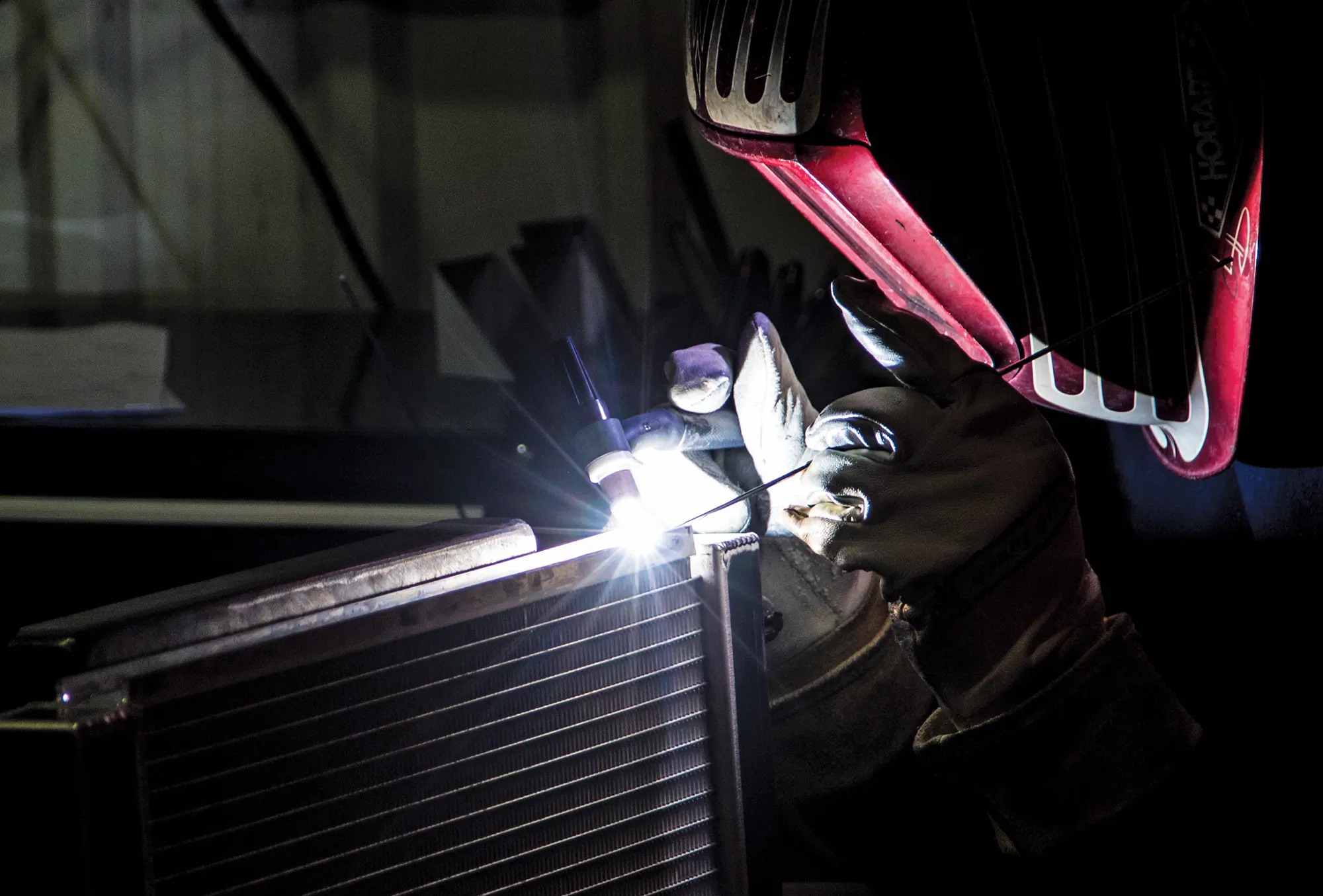

1. For strength and durability AFCO aluminum radiators have TIG-welded tanks and fittings.

Images by The Author
and Courtesy of The Manufacturers
here’s nothing cooler than taking your hot rod out for a cruise. On the other hand, there’s nothing worse than driving a hot rod with one eye on the road and the other on the temperature gauge as it climbs up the scale. That’s because overheating an engine always comes with consequences—it may be as simple as having to clean up the mess from dumping coolant out the overflow to substantial engine damage. Severe overheating can cause pistons to expand enough to scuff or even seize in the cylinders, rings can lose tension, stick, or literally weld bits of themselves to the cylinder walls, exhaust valves may stick in their guides, heads can warp, head gaskets can develop compression and water leaks, and blocks and heads can crack. In short, a good engine can become an even better boat anchor if it gets too hot. But thanks to a number of experts on the subject, we’re going to help you keep your hot rod cool.
How Hot is Too Hot?
 FEATURE
FEATURE
 Images by NotStock Photography
Images by NotStock Photographyhere are car guy shenanigans that most of us can relate to or have done ourselves at one point in time, but the fact that Wayne Long went through eight engines in his 1962 Chevy Impala within a year’s time is a number that even the most hardcore car guys can’t claim. “I was 18 years old back then and always loved to go fast, so I was either blowing up engines or doing whatever it took to get more horsepower out of the next one. Some things worked and some things… not so much,” Wayne laughingly confesses.

 TECH
TECH
 Images by The Author
Images by The Authorf this were a big pharma ad, right now we’d be telling you about a silent killer of early Chevys and try to scare the pajamas off you. But really, this is a somewhat common malady with older Chevy muscle cars that you may not even know is a problem. Driving around under city lights at night, there’s plenty of illumination on the boulevards and freeways so that dim headlights aren’t a major issue. But take a cruise across the western desert or in the Midwest on a moonless night and you’ll soon discover that anything over 50 mph becomes an issue with outdriving your headlights.
The modern solution has been to upgrade to LED headlights and several companies offer excellent bulbs that project a piercing bright light like a brand-new Lexus. The only problem for guys like us with a four-headlight Chevelle or El Camino is that it will require an investment of over $400 to cover new LED headlights. Thankfully, there’s another solution.
We decided to upgrade our headlights with a simple American Autowire kit that will use a pair of relays to put maximum voltage into the headlights, which will bypass the voltage drop through the headlight switch. The headlight switch then becomes merely the trigger to complete the circuit through the new relays.
 FEATURE
FEATURE
 Images BY THE AUTHOR
Images BY THE AUTHOR
 TECH
TECH

 Images by the Author
Images by the Authoronfident stopping power is a must in a high-performance Chevy. In addition to big rotors and multi-piston calipers, the power-assist system helps deliver that feeling of immediate responsiveness.
From the factory, the power braking system on almost all classic Chevy models comes in the form of vacuum assist—a simple and effective method that uses vacuum generated by the engine to multiply the driver’s force on the brake pedal. On stock, naturally aspirated engines it is an excellent system and, apart from the occasional failed diaphragm or faulty check valve, it’s largely bulletproof.
The dynamics change with performance upgrades such as an aggressive camshaft with big duration specifications or a power adder such as a supercharger or turbocharger. They typically reduce or all but eliminate the vacuum necessary for effective power braking assistance. The same goes for diesel engines.

 Images by Grant Cox
Images by Grant Coxt just 17 years old, Michael Housh was already juggling a busy life filled with school, sports, and family. Growing up as one of four siblings, all two years apart, taught him the value of hard work and family sacrifices. Little did he know that one fateful football game would spark a story that spanned decades, centering around a golden bronze 1972 Monte Carlo.
After a standout performance on the football field, Michael’s dad pulled him aside for a post-game chat. He praised his son for his hard work both in school and on the field, then came the surprise of a lifetime: a trip to Kansas City to pick out a car.
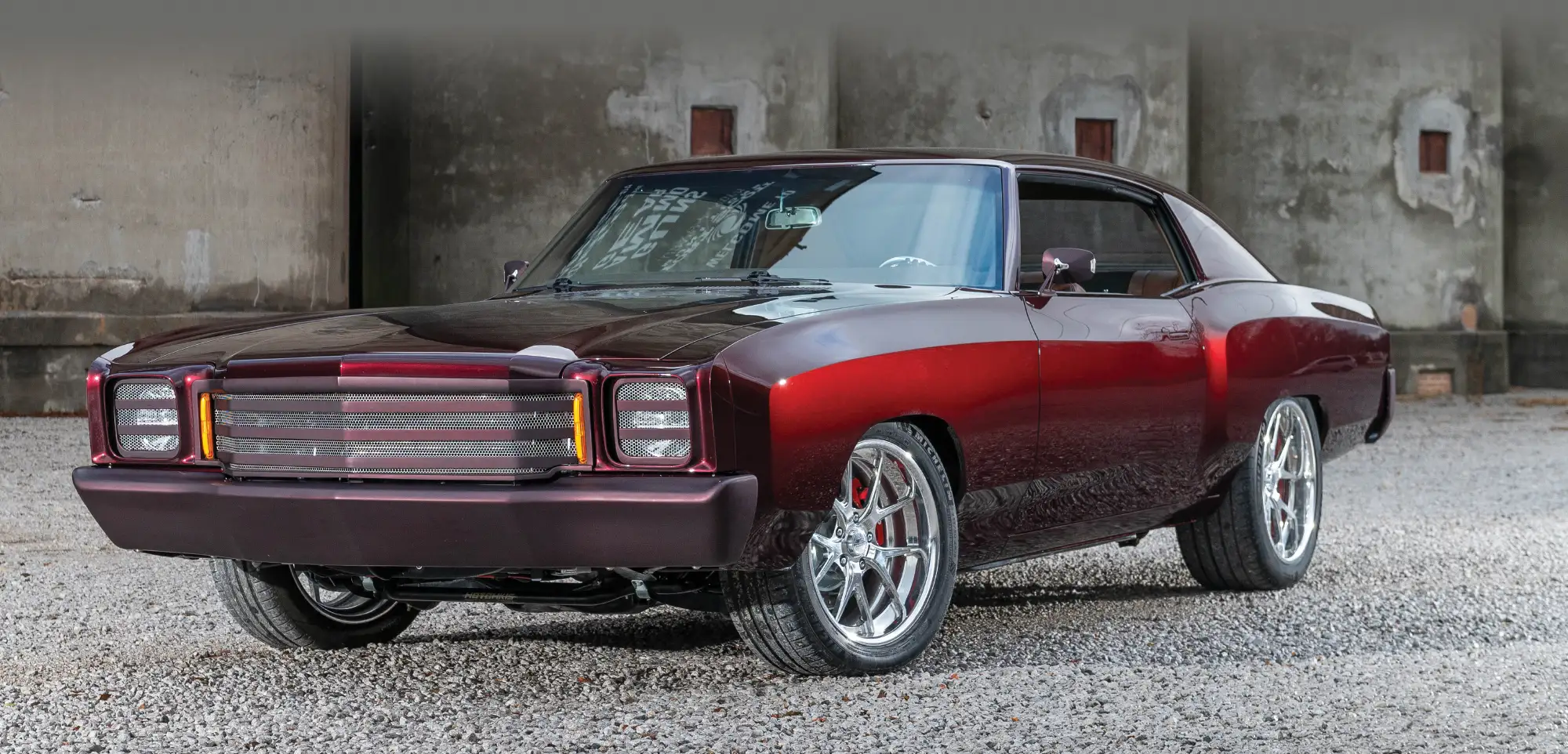
 TECH
TECH

 Images BY THE AUTHOR
Images BY THE AUTHORast month, we concluded the installation of a Gen 5 Vintage Air SureFit kit in our 1957 Chevy Handyman Wagon by installing the evaporator unit. The defroster vents were installed and hoses attached, as was the center vent, and hoses were routed in preparation for the side vents. The drain was in place to route any condensation outside the vehicle and the four hard lines were installed and routed through the firewall. It would seem that we were on the downhill slope, and for all intents and purposes, we were, but there’s still a lot of work to be done.
For starters, we still need to install the radiator and condenser unit. The previous small-block that was in our 1957 had a meager mechanical fan that pulled just enough air to keep the mild motor happy. With the installation of a hot-rodded LS3, this obviously wasn’t going to do, so we turned to DeWitts to help us sort out our cooling requirements. Since the addition of the A/C and its requisite condenser will add some additional heat load to the overall system, it’s paramount that the cooling system be at peak performance to ensure the A/C system blows air as cool as the Arctic snow. DeWitts’ recommendation of their LS Swap Aluminum Radiator with included electric fan filled the required void with room to spare
Advertiser
- American Autowire9
- Art Morrison Enterprises39
- Auto Metal Direct43
- Automotive Racing Products13
- Borgeson Universal Co.31
- Classic Industries23
- Classic Performance Products4-5, 89, 92
- Dakota Digital91
- Detroit Speed11
- FiTech EFI61
- Forgeline Motorsports69
- Golden Star Classic Auto Parts7
- Goodguys Rod & Custom Association59
- Heidts Suspension Systems47
- Lokar2
- National Street Rod Association57
- New Port Engineering89
- Powermaster Performance69
- Scott’s Hotrods75
- Speedtech Performance USA61
- Thermo-Tec Automotive89
- Triple Crown of Rodding, LLC45
- Tuff Stuff Performance Accessories75
- Vintage Air6
- Wilwood Engineering29








